Running Walking Cycling Mountain biking Swimming Canoeing Horse riding Downhill skiing Cross-country skiing
distance 0.00 km
energy 0 kJ
descent 0 m

What is Mapometer.com?
Mapometer.com is an online map-basedroute planner for sports people. It enables you to map your Canoeing and calculate the distances and elevation profiles of your routes. It also provides training logs so you can track your progress and monitor the calories you burn.
What can Mapometer.com do for you?
- Can I map my paddles to see how far I went? YES
- Can I plan my routes before I paddle them? YES
- Can I view the elevation profile of my canoeing / kayaking routes? YES
- Can I see much energy am I burning on my paddles? YES
- Can I record and track my training over time? YES
- Can I search for new routes or places to go caneoing / kayaking? YES
Advertisements
Please wait...
Support Mapometer from £8 (€9, $10 USD) per year we’ll activate adding markers to your routes (and you’ll get to use the site Ad free).
If you're already a supporter please login to enable markers.
Support Mapometer.com Login
If you’re promoting an event, mapometer.net gives a wider set of markers suited to event organisers.
Try Mapometer.net
Support Mapometer from £8 (€9, $10 USD) per year we’ll activate additional base maps (and you’ll get to use the site Ad free).
Supporters can choose from road map, terrain, cycle map & satellite imagery.
If you're already a supporter please login to enable the layer control.
Sorry, this page requires javascript
Details Editor
Facilities:
Contact Info:
NOAA Marine Forecast Zone:
- Details Editor Help
Show only the YourCoast points which match all of your Yes or No selections below . Features marked '-' are ignored.
Measuring distance along a track
- Click to add another point .
- To finish the track, either double-click the final point, or type Enter/Return .
- To finish the track without adding the current rubber-band segment, type Escape .
- To refine the track, drag any of the white circles. Dragging a solid white circle repositions an existing bend or endpoint. Dragging a translucent white circle creates a new bend.
- To extend the track without moving any of the existing bends, drag either endpoint a short distance, release, and continue drawing. You may combine this with click and hold or the Shift key, as described above, to extend the track with a curved path .
- To delete a segment of the track, double-click either the translucent white circle at its center or the solid white circle at its "to" end, or mouse over one of the circles while holding down the Delete/Backspace key.
- Click the Start Over button, or double-click anywhere outside of the track, to erase the current track and start a new one.
Working with Coordinates
- Click the + button to zoom in . You may also zoom using the mouse scrollwheel.
- Click the – button to zoom out . You may also zoom using the mouse scrollwheel.
- Street View (below the Zoom controls) : Drag the little man onto the map to show Street View at the dropped location (if available).
- Traffic button (below Map type selector) : This shows the current traffic conditions of major highways.
- Google Maps link (lower-left corner of the map) : Click the multicolored "Google" to bring up the the same view in Google Maps, either in the Maps app (on a smartphone or tablet) or in your web browser. This feature is provided by Google, so it may change in future versions.
- Keyboard shortcuts: list the available keyboard shortcuts for navigating the map (if your system has a hardware keyboard).
- Scale: click to switch between kilometers and miles.
- Report a map error: click to send a bug report to Google. Please use this only for problems with the map itself. For errors in the pushpins, send email to [email protected] .
Click on the map for a popup showing a detailed readout of the current near the clicked point (the exact location is indicated by a small red square). You have your choice of either a particle animation (the default) or static arrows, selected by radio buttons in the popup.
Click on the map for a popup showing a detailed readout of the wind near the clicked point (the exact location is indicated by a small red square). You have your choice of either a particle animation (the default) or static arrows, selected by radio buttons in the popup.
- Weather tab : The NOAA marine forecast for the selected icon is displayed. Some links at the top bring you to the NOAA point forecast for a nearby location, the Magic Seaweed surf report (for coastal sites), and the Windy.com wind forecast.
- Details tab : A brief description of the selected location. For put-in and destination locations, the description may include facilities listings, photos of the site, and links to external web pages. For tide and current stations, you'll see the TCD data on which predictions are based.
- Directions : Get driving directions from the specified location to the selected map marker, or vice-versa. Directions will be displayed in a separate Google Maps window. The From input defaults to "Home", which will work if you've registered your home address with Google. Click the My location button to fill the From input with your current physical location. Note: To use the My location button, you must set privacy preferences in both your OS and your browser to allow bask.org to access your location. You will be prompted to do so if necessary.
- Search for tides or currents : In conjunction with the Tides tab, you can search for tidal extremes (max ebb, low tide, etc.) within a specified time period, at the tide or current station selected on the map. A period of one, three, six, or twelve months starts on the date selected in the Tides tab. You can restrict the search to certain days of the week, hours of the day, and a given tidal range. Optionally, you can look for sequences of high and low tide, or max ebb and flood within the specified hours. All matching days are displayed in a table. Click on a date in the table to see that day's tides displayed in the Tides tab.
- List of Chart on Every Deck charts : This is a complete list of all the downloadable chart PDFs offered by the Chart on Every Deck project. If you click a name in the list, its outline will be visible on the map, and a download button will appear.
- Measure tab : Measure distances along a track, and get coordinates of points on the map. See instructions in the Measure tab of the Info panel.
- Help tab : You're looking at it now!
- Map button : This isn't a tab. It switches you to full-window Map View in which only the map and its controls are visible. In Map View, there's a button in the upper-right corner, labelled with the name of the last tab you visited, which will bring you back to that tab of the Info Panel .
Need More Screen Space?
- Use Map View : Click the Map button at the top right of the Info Panel to show only the map and its controls. When viewing only the map, the blue button in the upper-right corner brings back the Info Panel. The keyboard shortcut for both of these is m .
- Minimize the tide graph : In the Tides tab, click the × in the top right corner of the graph to hide the graph and some of the text below it. Click the + to bring them back. The keyboard shortcut for both of these is g .
- Hide the page header and disclaimer text : Click the × in the upper-right corner of the disclaimer text (at the bottom of the page, under the Info Panel ), to hide both the disclaimer and the header bar at the top of the page. Click the + to bring them back. The keyboard shortcut for both of these is h . Note: The disclaimer and header are automatically hidden in Map View .
Keyboard Shortcuts
- Plus and Minus , i.e. = and - : zoom in or out. These shortcuts are built in to the Google map.
- Shift-plus and Shift-minus , i.e. + and _ : change the map magnification level (see magnify in Map > Map key ). You may also magnify by holding down the Shift key while using the scrollwheel.
- Shift-zero , i.e. ) : reset the map magnification level.
- Arrow keys , i.e. ↑ , ↓ , ← , → : move the map view by a small amount. These shortcuts are built in to the Google map.
- [ and ] : move the time cursor (vertical red line) on the tide graph by six minutes.
- Shift-[ and Shift-] , i.e. { and } : move the time cursor (vertical red line) on the tide graph to the previous or next hour.
- m : enter/exit M ap View.
- g : hide/show the tide g raph.
- h : hide/show the page h eader and disclaimer text.
- i : hide/show the i nfo popup above the selected station on the map.
- T : Enter the T ides tab.
- W : Enter the W eather tab.
- D : Enter the D etails tab.
- I : Enter the D I rections tab.
- S : Enter the S earch tab.
- M : Enter the M easure tab.
- H : Enter the H elp tab.
- m : Enter/exit m ap View.
- Delete or Backspace : delete a point from the track.
- Shift : automatically add points to the track without clicking as you draw (hold the Shift key down).
- Enter or Return : finish the track.
- Escape : finish the track without adding the final segment.

Before You Go
Kayak Fishing is More Dangerous Than You Think, Here's Why
How to Estimate Kayak Trip Time – Complete Guide

Trying to figure out how long a kayak float is going to take is tricky. Often times, I have found myself underestimating the length of my float and taking over an hour or longer than I intended. When you’re relying on someone to pick you up at the end of your float, like a shuttle service, timing is extremely important.
How fast a kayak can go
The average recreational kayaker travels about 3 mph (2.5 Knots). The speed at which a kayaker can travel depends on water conditions, the type of kayak used, the experience of the paddler, and how often the paddler takes a break from paddling and floats.
There are a lot of factors to take into account while calculating a trip in your kayak but there are a few baselines you can use to make this process as simple as possible.
How long it takes to kayak a mile
The amount of time it takes to cover a mile will vary depending on several factors all the way down to what style of kayak you’re in and how much gear you have on it. If you’re looking to meet a deadline then it’s better to be early than late.
It takes, on average, 20 minutes to travel a mile in a kayak at a pace around 3 miles per hour.
Know your float, if you’re traveling down faster-moving water than normal, then you can subtract 5 minutes. Likewise, you can add 10 minutes if the water is still or slow-moving.
It can be hard to calculate precisely how long it will take to complete a float, especially if you have never done that exact trip before. Always give yourself a 15-30 minute leeway so that you have plenty of time to enjoy the sights and snap a few pictures.
For example: Say your first float ever is 3 miles long and you have no idea of knowing how fast the river is moving. The best thing to do is assume that the float will take you an hour then add 15 minutes. That’s 3 miles per hour on average, plus a 15-minute window. 1 hour and 15 minutes of total float time for a 3-mile trip.
Here is a helpful chart to help you determine how long a float will take you. Remember that longer floats will need more leeway time to allow for more stops or slowdowns.
If you plan on making any stops along the way, adjust accordingly.

How far you can kayak in a day
Float trips that span several days and involve camping out on the side of the river are becoming increasingly popular. Couples or groups of people get together and go on a super fun camping trip improved by the magic of kayaking, I love it.
The average kayaker can travel about 12 miles per day. It is possible to travel farther, however that doesn’t leave any time for landings and breaks.
Sitting for long periods of time becomes very uncomfortable. Kayaking is about like riding in a car and I find myself wanting to stop and stretch my legs about ever 2 and a half hours. With that being said, I am a taller person (6’4”) so I have less legroom than others.
Group floats will also be a little slower just because there is more room for slowdowns and more stops to stretch and use the restroom.
Don’t underestimate how much water you will need during an all-day or several day float. Make sure you consume about a gallon per day minimum.
Multi-day float vs single day float
If you’re planning on floating for several days and camping along the river during the night, then allow yourself about 3 hours in the morning and 5 hours in the afternoon to tend to the camp and fix food.
If you’re only floating for one day from point A to B, then you should be able to kayak farther since you don’t have to worry about pitching tents at the end of the night.
Another thing to remember is that you have less daylight in the winter than you do summer time. If you’re planning a winter float, you will have less daylight to cover distance.
Helpful tools to calculate kayak trip distance with technology
I’ve gathered a couple of useful resources together that I use to plan my floats below.
The MyFitnessPal App
If you’re looking for a more detailed look at how fast you can make a float, you can download a running app like My Fitness Pal and use it during your trip. In the end, you can see your average speed and how long it took you to complete your journey. As far as apps go, pretty much any running app will do. Just use it like you would if you were running and it works just the same.
Google Maps Engine
To map your float before you go, you can use Google Maps Engine . Everyone knows about Google Maps, but this lets you plot as many custom points as you want while also allowing you to draw your own paths to them. You can draw the distance of a float on the map and it will show you the exact distance of your path. This tool is extremely helpful for planning.

USGS National Water Info System: Mapper
The USGS National Water Info System is a huge database full of valuable information if you’re wanting to accurately plan a float. You can search for the waterway you’re looking for and see all kinds of valuable information like depth, discharge rate, water temperature and so much more. The information is presented in an easy to read chart on daily, monthly, and annual intervals.

Factors that may affect your kayak float time
There are couple factors that can severely impact your trip time, some of which are easier to predict than others.
Weather and Water Level
The weather and water level are the two easiest factors to predict and plan before before your float. Checking the weather several times leading up to the trip is recommended and you can expect the water level to reflect the amount of rainfall over the last few days.
In the spring, water levels tend to be higher than summer and fall and will flow much faster.
Be sure to find out if there is a dam upstream that may open or close gates at any time. dams can affect the water level fairly quickly and can either speed your trip up with increased water flow or make some areas of your float impassable because of low water in some situations.
Just like the water level, the obstacles that you encounter may be directly related to the weather. Downed trees, increased rapids, or impassible shallow water will slow down your time significantly depending on how easy it is to pass. Groups will take even longer because it requires more paddlers to navigate the obstacle while the others wait before continuing.
Unfamiliar Waters
If you’re doing a float for the first time, make sure to plan to take extra time to soak up the scenery, take pictures, or fish.
Navigating unknown waters requires patience and a little more concentration because you should constantly scanning ahead for obstacles, hazards, or rapids.
Particularly long floats may require you to use a map or watch for particular spots along the bank to stop and break.
Recent Content
Why Fisherman Everywhere Are Covering Their Faces
It seems like every fisherman on YouTube and in commercials are wearing face-masks or buffs these days. The buffs come in all colors and patterns and have been subject of a hot debate between...
Science Says Bass HATE Chartreuse - Pros Disagree
I think it's safe to say that the vast majority of us anglers have never heard the word 'chartreuse' used outside of fishing. I don't think anyone who is new to fishing looks at a bright neon...
Sea Kayaking For Beginners – Newbie’s Guide To Ocean Kayaking
March 14, 2024
Founder, Kayaking & Paddle Boarding Expert
Sam is the founder and editor of WaterSportsWhiz. With over 20 years of experience across various water sports, he provides trusted reviews and expert advice to help others pursue their passion for getting out on the water. When not working, you can find him kayaking, paddle boarding, or planning his next water-based adventure with family and friends.
Read Our Editorial Guidelines

Steep cliffs, secret bays, hidden beaches, patches of thick seaweed, seals that might pop up to say “Hi” – it sounds beautiful, doesn’t it?
Ocean kayaking offers endless possibilities; the perfect blend of stunning views and wild, unpredictable environments, allowing paddlers to experience open water and view the coastline from a whole new perspective.
But it also entails strong winds, changing weather conditions, choppy waters, currents – all that intimidating stuff.
So, while I get that you’re eager to hop in and start paddling, you might want to check out this guide to sea kayaking for beginners first.
We may receive a commission if you click a link on this page and then go on to purchase something, but at no extra cost to you. Learn more here.
What Is Sea Kayaking?

Here’s a quick message from our sponsor, Captain Obvious:
Sea kayaking is – well, kayaking in the sea. Duh.
All jokes aside, though, I wish the answer were that simple. I mean, technically speaking, yes, it is a type of kayaking that involves paddling across open waters. But it can include many things – from sea fishing to full-blown expedition trips and everything in between.
Plus, we are talking about a completely different environment here – even for someone who has a fair share of flat-water paddling experience.
And yes, you’ll need a specialized kayak for this.
What Is A Sea Kayak?
I know you’re going to make this wrong assumption – even some experienced kayakers do – so I figured I should address the misconception straight away:
No, a sea kayak is not the same as a touring kayak .
I get how they might look similar with their long and narrow hulls and sleek silhouettes. And you would be right to assume that many touring kayaks can be used in the seas – but not all of them are sea-worthy.
And while we’re at it, what’s the difference between a kayak and a sea kayak?
It sounds like a strangely worded question, I know, but you get what I mean by that. “Kayak,” in this sense, refers to a wide range of vessel types that are not sea kayaks, such as recreational kayaks or general-purpose boats, whitewater kayaks, and the like.
Long and narrow, sea kayaks are characterized by sharp, V-shaped hulls, integrated bulkheads , usually with abundant, water-tight storage options, and are designed with rough, open waters in mind. You’ll often see them equipped with a skeg or rudder system – although they usually offer solid tracking performance on their own, too.
Sea kayaks are not cheap as they are specialised open water boats, built to hostile conditions- so think of them as an investment. I’d suggest buying from a well-known manufacturer such as; Wilderness Systems, Perception Kayaks, or Eddyline Kayaks.
Finding the right sea kayak is an adventure all its own – don’t know where to start? Check out our list of the best sea kayaks for beginners .
Oh, and one more thing:
It might not be worth buying a sea kayak straight off – not if this is your first foray into this type of kayaking. And before you do get one, consider where you’ll store it and how you’ll transport it to the water. That last part might require a trailer , by the way.
How Hard Is Sea Kayaking?

I’ll assume that you’re not a total newbie and that you’ve had a fair share of paddling trips on the local lake or a nearby river. If I’m right, I can see how, as someone who’s used to river kayaking – waterfalls, rocks, rapids, and all that – you might be under the impression that the sea won’t be able to offer you that “Wow” factor.
What’s so exciting about seeing nothing but blue everywhere you look? Mesmerizing, sure – but adrenaline-fueling? Not so much.
That’s where you’d be wrong. Oh-so-horribly wrong.
Sea kayaking is anything but a turn-up-and-simply-paddle type of activity. There is a pretty long list of challenges you’re likely to encounter, all of which could make sea kayaking much harder than you might expect it to be – especially when compared to river kayaking .
Here are a few:
- Varying Water & Weather Conditions – You’re facing all the challenges of open waters at once. Series of waves, strong winds, powerful currents, tides – all without any shelter in sight. And the fact that the conditions can change in a matter of minutes doesn’t make it any easier.
- Requires A Certain Level Of Fitness – Surprise, surprise, you actually have to paddle when you’re out on the sea. The moment you stop, you’re leaving room for currents and winds to take over. It’s an endurance sport in every sense of the word – and you’re going to feel the strain by the end.
- Maneuvering Requires Advanced Skills – Sea kayaks are long, pointy, slender – and a real pain to maneuver without advanced paddling skills. “Stick your paddle’s blade in the water and pull” is nowhere near enough to pull this off successfully – let alone safely.
- Goes Beyond Just Paddling – Mastering essential skills and knowing what you’re doing paddling-wise is one thing. But sea kayaking requires skills that go beyond swinging that paddle of yours. Marine navigation, water safety and survival skills, and the basics of marine communications and emergency procedures, such as using a VHF radio to make a distress call, are all skills you have to master.
Also, if you ever caught yourself wondering, is sea kayaking good exercise, I’d like to add:
Even recreational kayaking can be quite a workout if you put in the effort. But paddling in open waters will kick your butt – I can promise you that.
Dangers Of Sea Kayaking: Is Kayaking In The Ocean Dangerous?

If you have to ask me, you probably know the answer. Okay, that might’ve sounded a bit too gloomy – but it’s true that it won’t be a walk in the park.
Then again, sea kayaking isn’t some death trap for kayakers to paddle into, either.
As long as the weather conditions are good and the waters aren’t working against you, kayaking in the sea is generally safe. But we both know, things are rarely ideal.
There are some potentially risky – or flat-out dangerous – scenarios you should be prepared for when you hit the seas.
Here are a few common dangers of sea kayaking to keep in mind:
- Weather – You’d be surprised how quickly strong winds, lightning storms, rain showers, and dropping temperatures can change a casual afternoon paddle into a life-threatening situation. The ocean is unpredictable – and the weather can be, too. The conditions can turn in a matter of minutes.
- Extreme Cold & Heat – Make no mistake about it; both can be deadly when you’re out on open water. Too cold, and you’re at risk of cold shock and hypothermia. Too hot, and you’re at risk of heat exhaustion and heatstroke .
- Rough Waters & Currents – One thing you should never do is undermine the power of the open waters. Again, the ocean is unpredictable. You’ll be going against rip currents, series of large waves, changing tides – all of which will try to throw you off your course.
- Boat Traffic – You’re not on a nearby lake; chances of encountering other boats – often much larger than your kayak – are pretty high. You might be able to see them from afar, but the real question is – will they be able to spot you and your plastic boat?
- Getting Lost At Sea – The mere thought of it sounds terrifying, doesn’t it? The thing is, it can be hard to maintain any sense of direction and keep track of how far you’ve paddled when there’s no shore or landmarks in sight.
- Sharks – Yes, yes, shark attacks are not as common as one might imagine – but they do happen. While you shouldn’t let your imagination run wild or let your fears get the best of you, you should be aware that encountering a shark is a genuine possibility. You paddled your ‘yak straight into their front yard, after all.
How To Start Sea Kayaking: A Few Things You Need To Master

Again, sea kayaking is far from a walk in the park – both in terms of dangers you may encounter and the technical and physical challenges you’ll have to overcome. I hope I have made that very clear by now.
How does one get into it, then?
Well, it’s going to take a bit of work. But don’t get too discouraged – as long as you master these skills, you should be ready to hit the seas.
Prerequisites: Make Sure You Have A Suitable Level Of Physical Ability
I don’t know who needs to hear this, but:
If your current physical fitness levels are less than optimal, you have no business going on an open-water paddling trip.
And no, this isn’t me shaming you for being a couch potato. I’m hoping to get you to realize that this isn’t one of those hop-in-and-hope types of outings.
Kayaking in open water will be anything but easy – technically, physically, and mentally – and you need to be 100% sure you’re cut out for the task.
So, ask yourself:
- Are you physically fit? How’s your endurance?
- Are you a strong swimmer?
- Do you know how to re-enter a kayak from the water?
- Have you paddled long-distance before?
- How much flat-water experience do you have?
If you have any doubts about your ability to tackle the challenges the sea might throw your way, I recommend that you reconsider heading out for now.
Know your limits – and respect them.
Take A Lesson
Spending a day or two with a certified instructor will not only get your paddling technique up to a good standard but also help you overcome any fears you might have regarding paddling in open waters.

It’s not about lulling you into a false sense of security; the ocean will always be an unpredictable territory. It’s about building up your basic skills, getting familiar with different conditions in a controlled manner, and, in turn, building both competence and confidence.
For first timers this might include dry land instruction on how to set up your own kayak; seat and foot peg adjustment in order to get the paddling position, rudder and foot pedals set-up, and how to outrig your ‘yak for ocean expeditions.
Controlling a sea kayak is a whole different ball game than than of a recreational kayak, so I would advise you to go over paddling techniques and master the fundamental paddle strokes, including:
- Basic forward strokes and reverse strokes
- Sweep strokes (forward and reverse)
- Positioning and maneuvering strokes, including draw and sculling strokes
- Edging your kayak
But more importantly, you have to learn key safety skills , such as:
- How to perform deep-water self-rescue (and how to assist others in your group)
- How to do a wet exit and recover from a capsize using different techniques, like the paddle float rescue, scramble (cowboy) recovery, and kayak T-rescue
- How to roll a kayak
- How to perform the side sculling maneuver

Learn How To Navigate
Remember what I said about sea kayaking requiring more than just good paddling skills? Well, learning the basics of open-water navigation is just one of the things I had in mind.
Given how easy it is to get lost at sea, I’d say learning the basics of marine navigation should be high up on your list of priorities. Don’t risk getting lost in the middle of nowhere – with only water everywhere you look.
So, make sure you have a good grasp of the basics of open-water navigation, and for the love of God – learn how to use a compass and read a map.

Learn Marine Radio Protocol
Another thing I mentioned earlier – besides navigation – is that sea kayaking also requires you to have a basic understanding of marine communications and emergency protocols. And by that, I mean knowing how to use a VHF marine radio and send a distress call.
Because one, smartphones aren’t particularly reliable in these scenarios. And two, you can only make one call at a time.
Now, keep in mind that Channel 16 (156.8 MHz) will be monitored by the US Coast Guard and is reserved for safety and distress calls. As for the actual emergency VHF radio protocols, you’ll have two options:
- Mayday , a protocol that indicates an imminent threat to life and the need for immediate assistance
- Pan-Pan , a protocol used in urgent situations that are not life-threatening
Understand (And Be Able To Read) Weather & Water Conditions
Yeah, yeah, you know how to check the weather app on your smartphone. We all do. But that’s not quite what I have in mind when I say, “be able to read weather and water conditions.”
And just so we’re clear, I don’t mean licking your pinkie to judge the direction of the wind, either.
I mean understanding how different weather conditions can affect the water – like the connection between winds and waves , for instance, the impact of tidal currents , and what a high or low tide means in terms of water levels .
The good news is that tides can be predicted accurately using these charts . As for the weather conditions, you know the drill – weather forecast .
What To Wear When Sea Kayaking?

If you’re going to stay safe and comfortable – let alone have fun – in the outdoors, you’re going to need clothing that can protect you from the elements. Unlike clothing for other outdoor sports, a kayaker’s clothing has to account for the water factor.
Water can suck the heat away from your body up to 25 times faster than air, sending you on the fast track to hypothermia. So, you have to dress for immersion – not the weather.
And that usually requires the following:
- Wetsuit , which holds a thin layer of water close to the skin, warming it up and using it as insulation – but only works when the conditions aren’t too extreme.
- Dry suit , which seals out water, keeping you dry – but it also requires insulating layers to be worn underneath.
- Base layers , mainly moisture-wicking clothes made of polyester or Merino wool – never cotton – that are worn next-to-skin.
- Shell layers , preferably with neoprene or latex gaskets at the neck and wrists that offer wind protection.
- Kayaking boots , usually made of thicker neoprene, that keep the feet dry and warm.
- Hat – again, one made of neoprene – to protect your head from cold air and brisk winds.
- Paddling gloves , which will protect your hands from extreme cold and minimize blisters – these hurt as hell in saltwater, by the way – without compromising your grip.
- Helmet – or brain bucket, if that’s what you prefer to call it – to protect the skull and, more importantly, that brain of yours.
Essential Sea Kayaking Gear Checklist: What Equipment For Kayaking In The Sea?

Okay, we talked about what to wear when sea kayaking. But we both know that there’s more a paddler needs to bring on such an outing.
So, since you’re already in the process of making a list of items to pack, let’s go over essential sea kayaking gear , too.
Obviously, a sea-worthy kayak will be a must – but other than that, you’re going to need:
- A spare paddle , preferably a two-piece one, as a just-in-case piece of equipment. It’s better to have it on board and not use it than to lose your main paddle on the open water and not have a backup solution.
- Dry bags – yes, plural – because anything that isn’t stored in a dry bag and secured to the kayak is at risk of ending up at the bottom of the ocean, or, at the very least, water damage.
- A spray skirt – because rain and large waves that are splashing left and right will not only have you soaking wet in a matter of minutes but fill up your kayak’s cockpit with water, too.
- A bilge pump is also worth mentioning while we’re on the subject of your cockpit filling up with water.
- Paddle floats – small, inflatable bags that attach to your paddle’s blades and play a vital role in performing paddle float rescue.
- Kayak lights – because you have to make yourself easy to spot out there, especially in low-visibility conditions. And a 360-degree white light is the only way to do that.
- Signaling and communication devices , starting with visual distress signals ( flares ), a noisemaker, such as an air horn or whistle, a marine VHF radio , emergency beacon , or a GPS SOS device .
- Navigation devices – because marine navigation is a serious business. You’ll need a GPS unit , a kayak compass, and a good, old map.
- An emergency survival kit , which will essentially be your bail-out bag should things go South, containing basic survival tools, including rain gear, additional thermal base layers, spare batteries, a first aid kit, rope, a Swiss army knife or multi-functional tool, water and water-purifying tablets, fire-starting supplies, energy bars, and an LED headlamp.
Since ocean kayaks generally don’t struggle with lack of storage space as much as an average ‘yak does, it’s safe to assume you won’t have trouble bringing most of these items – and more – with you.
Golden Rules Of Sea Kayaking – Remember The 5 Ps
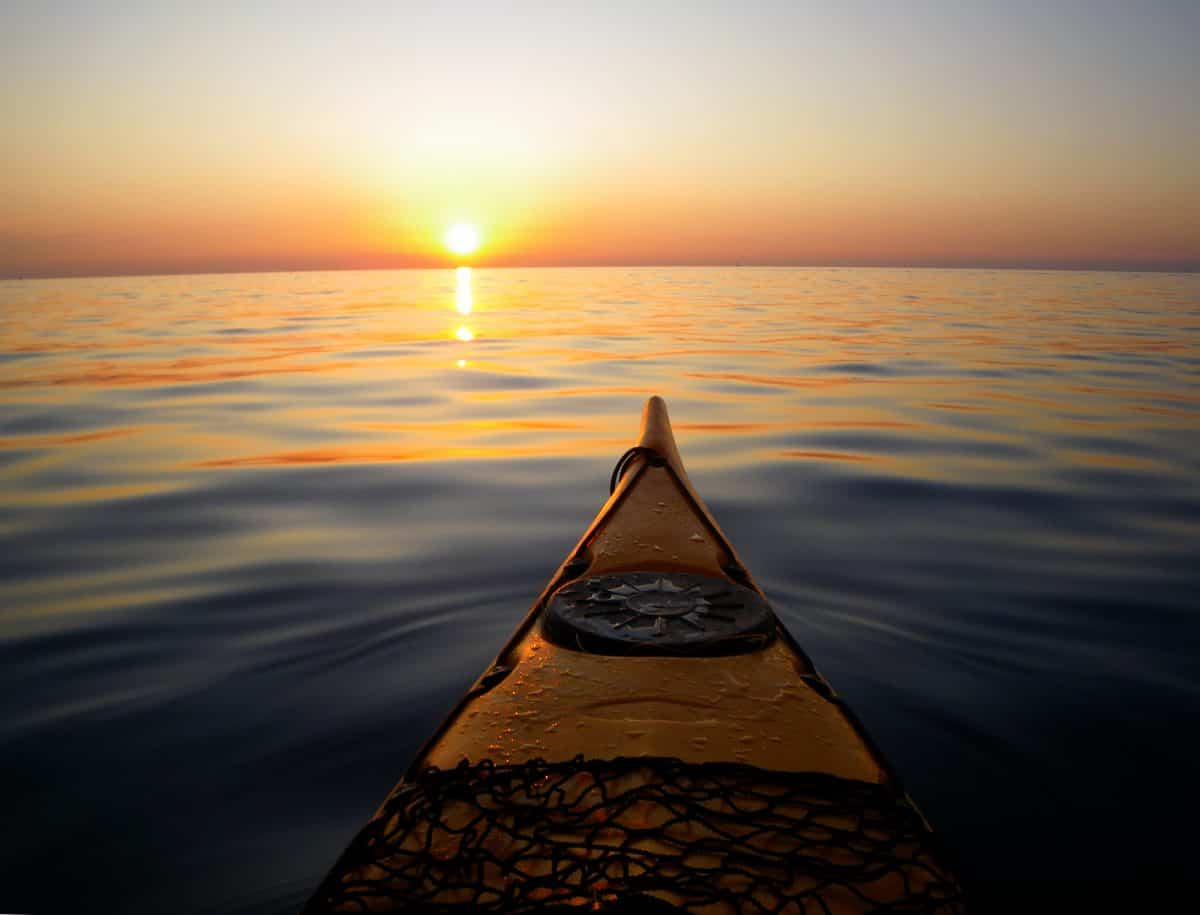
Okay, we’re nearing the end of this beginner’s guide to sea kayaking – but we’re not quite there yet. There’s one more thing – or five, if you want to get technical about it – I’d like to go over with you before we wrap things up:
The 5 Ps of sea kayaking.
#1 Plan (And Then Plan Some More)
First of all when planning a kayak trip, get familiar with the area you’ll be paddling in – and pick your route, including entry and exit spots and a plan B route, accordingly.
Proper planning is half the battle in ocean kayaking, if you ask me. And by “proper planning,” I mean:
- Map out your paddling route in advance, down to the last detail.
- Check – and then double-check – the local weather reports . Be sure to factor in how the weather conditions in the days prior to your kayaking trip might affect water temperature.
- Check the tide predictions in the area and plan the beginning and end of your outing accordingly.
Also, if you plan on clocking in more than a few miles and going further from shore – or spending the night out there – be sure to file a float plan . Someone – be it a family member or a close friend – should know where you’re going, when you expect to come back, and, most importantly, what to do if you don’t.
#2 Paddle With A Partner
Bring a friend – or four. Bring as many friends as you’d like. Whatever it takes to make your sea voyage safer.
I’m serious, though.
As much as you may enjoy the serenity of kayaking solo, you should be mindful of the fact that the ocean is one big, powerful – and pretty darn unpredictable – place. Trying to conquer it alone is a bad idea.
You’ll be glad that someone’s there if you ever find yourself requiring assistance to get back into your kayak.

Plus, it’s going to be a lot more fun if you make it a group thing. Think of it as a road trip – but in the ocean.
#3 PFD (Wear It)
I generally believe that this much should go without saying, but then I figured – it doesn’t hurt to be reminded about the importance of life vests every once in a while.
They’re called life jackets for a reason. They save lives.
The very nature of kayaking guarantees that you will end up in the water – no matter how skilled and experienced you are. But when that happens in open waters, which tend to be affected by the weather and powerful currents, wearing a PFD becomes more important than ever.
In terms of choosing a suitable life vest , make sure it fits you right and that it’s rated for off-shore use and USCG-certified. Also, I’d recommend PFDs that feature multiple attachment loops and pockets; you should keep a whistle, a waterproof flashlight, and an emergency beacon on you at all times.
Stay safe out there, folks!
#4 Practice Your Skills & Drills
I’m not saying you need to go full-on Bear-Grylls-style survival mode, but you need to know how to keep yourself alive out there should things go wrong.
Practice and hone your skills until basic paddling strokes and more advanced maneuvers, such as rolling, edging, and performing both assisted and self-rescue, become second nature to you.
And then practice some more.
You should get to a point where you can pretty much do these things without thinking – because your chances of getting out of a sticky situation depend on you being able to think clearly, make sound decisions, and react without succumbing to panic.
#5 Prepare (For Everything)
I’ve said this already – and I’ll keep repeating it until you take me seriously – but the ocean can be an incredibly unpredictable environment.
And the only way to be genuinely prepared is to – well, prepare for EVERYTHING, including the worst-case scenario. That means you need to:
- Carry a means of calling for help – and keep it on hand
- Pack an emergency survival kit
- Keep all your electronics (GPS, for example) fully charged and bring spare batteries
- Bring extra water and food for emergency scenarios
- Pack a change of clothes and a towel
- Stick close to the rest of your paddling group
Ocean Kayaking For Beginners: Summary
Getting into sea kayaking requires you to remain aware and follow certain open-water safety protocols, including:
- Choosing a sea-worthy kayak
- Wearing a PFD
- Researching the location and mapping your route
- Mastering your paddling technique
- Learning the basics of marine navigation
- Understanding weather and water conditions
- Paddling in a group rather than alone
- Understanding the dangers and being prepared for everything
Meet the Team
Affiliate disclosure.
Privacy Policy
Cookie Policy
Editorial Process
WaterSportsWhiz
2892 N Bellflower Blvd #1026 Long Beach, CA 90815 United States
+1 (562)-283-4796
We use cookies on this site to optimize site functionality and give you the best possible experience. By using this site, you accept our use of cookies. Read Our Policy
© Copyright 2019 - 2024 - WaterSportWhiz.Com
Sea Kayaking – The Complete Guide
With oceans covering most of the Earth’s surface, it’s no surprise that you want to get out there and explore it.
The rhythmic splash of your paddle, the thrill of spotting a dolphin or seal, the sheer awe of seeing a sunset from the middle of the ocean.
But, let’s be real, it’s not a walk in the park. You need to be in good shape, possess some technical know-how, and always remember: safety first.
Okay, let’s get into it
Table of Contents
What Is Sea Kayaking?
Sea kayaking is more than just kayaking in the sea when you’re at the beach. It involves more technical kayaking skills and a dedicated sea kayak to take on the open water conditions of the sea.
Sea kayakers tend to experience rougher waters, wind and stronger currents than recreational kayakers or anyone who is paddle boarding on the coast.
What’s The Difference Between A Sea Kayak And Other Types Of Kayak?
A sea kayak is different from other types of kayaks because it is specifically designed to handle ocean conditions. This means it has sufficient levels of secondary stability to handle ocean waves and rough water.
These types of boats also have a long and narrow hull to cut through water, allowing for fast and efficient paddling in wind and strong currents or waves. They usually have V-shaped hulls with a sharp bow and stern. And they will often have built-in bulkheads for added buoyancy.
Sea kayaks can look similar to touring kayaks. But the main difference between a touring kayak and a sea kayak is the design of the hull. Some touring kayaks are only able to handle flat water and have flat bottoms.
Essentially, a sea kayak is a type of touring kayak but it has the added capability to power through wind, waves, and currents.
> The best sea kayaks in review
You may find that sea kayaks have additional features to make paddling in ocean conditions easier. For example, many sea kayaks will have a rudder attached, which can help to control direction and help you maintain your course in moving water and windy weather.
Other kayaks, such as recreational kayaks, are generally not built for efficient paddling on ocean waters. This is because these types of boats are mostly designed with flatwater in mind, so tend to have a high level of primary stability but not secondary stability. They also tend to be much wider.
Unlike other types of kayaks, a sea kayak is almost always a sit-inside kayak. This is so that the kayak can be rolled easily in the event of a capsize.
The sit-inside cockpit on a sea kayak also allows for additional protection from the elements, such as wind, rain, and sea spray.
You will also usually find several storage compartments on a sea kayak, so that you can load it up with gear for a few days. There should also be room to stow your essential safety gear and equipment, such as a bilge pump and a compass.
Additionally, sea kayaks will usually have perimeter lines around the deck, which can be used as grab lines during a self rescue.
Is Sea Or Ocean Kayaking Hard?
Sea kayaking can be more difficult than recreational kayaking. If you’re used to paddling on calm, flatwater in a short, wide sit-on-top kayak then you might need to master a few extra skills before you start sea kayaking.
One of the main difficulties you might encounter is the changing water conditions. Remember, the ocean is not like your favorite flatwater lake or pond. The ocean is constantly moving, with tides and currents to contend with.
The weather conditions can also affect the sea conditions, with strong winds creating large waves and rough waters which can make paddling difficult.
You Might Need To Alter Your Paddling Technique
Sea kayaking can require you to use a more efficient paddling stroke . High angle forward strokes tend to be more efficient for sea kayaking, as it can minimize fatigue and allow you to maintain a decent speed and forward momentum.
Unlike kayaking on a small lake or slow-moving river where you’re usually able to stop paddling for a while to enjoy your surroundings, you can’t really do that on the ocean.
The currents and waves could move you and your kayak off course if you stop paddling for any length of time.
You Should Have Additional Kayaking Skills
Sea kayaking requires advanced paddling skills in addition to adjusting your paddling technique. One of the most important safety skills you should learn before you take to the high seas is the Eskimo roll or kayak roll.
This skill lets you roll your kayak in the event of a capsize using a sweep stroke with your paddle to bring you back up to the surface while remaining inside your kayak.
Video: How To Do A Sweep Kayak Roll
You should always have a spray skirt attached to you and your cockpit rim before you attempt to roll your kayak. You should also always remember to wear your life jacket every time you kayak.
If you have only ever paddled a small recreational kayak or a whitewater kayak, you might want to practice maneuvering a longer vessel. Maneuvering sea kayaks can be a little trickier than shorter vessels.
Because sea kayaks are long and narrow, they tend not to be as quick to turn as nimble whitewater kayaks, for example . But the same principle applies.
To turn quickly, you should edge your kayak by leaning slightly to one side (the outside edge of the turn you want to make). You can then use sweep strokes starting as close to the bow as possible and ending as you reach your torso.
It can be best to keep your feet on the foot peg to help stabilize yourself in the boat while you make the turn.
Video: Turn Your Kayak Quickly
You Might Need To Learn To Use Additional Accessories
Sea kayaks can have extra features that may require some getting used to. For example, you may need to learn how to use a rudder system to help you paddle in a straight line. Most rudders are controlled using foot pedals or a toe pedal inside the cockpit, allowing you to keep both hands on your paddle.
You might also need to learn how to use a VHF or marine radio. This can be useful for safety as it can let you call for help if you get into difficulty. Knowing how to send a distress call and respond to one are skills you should generally have before you head out on the ocean.
It can also be a good idea to know how to use a compass. General survival skills can also be a good shout before embarking on a kayak trip .
Safety First: Preparing For Emergencies On A Sea Kayaking Trip
No matter what type of kayaking or other water sports you plan to do, you should always be prepared for an emergency.
For starters, life jackets should always be worn. In an emergency, you may not have time to put it on before you need it, as a capsize can happen in a split second.
One of the first things you should do before you head out is check the weather conditions for your launch location and the route of your planned journey. Weather conditions can change rapidly on the coast, which means you need to be prepared to cut your trip short or postpone your launch.
If you’re a new paddler, you might want to stay close to the shore. This can keep you out of the way of boat traffic and within a safe swimming distance of land. It might be helpful for your first time to paddle near a lifeguard zone for added safety.
How Do I Start Sea Kayaking?
The first thing you should do before you start ocean kayaking is to practice basic paddling techniques on calm flatwater so that you can get to grips with water safety in a less dangerous environment.
> Can kayaking be dangerous?
It can be useful to practice kayaking on your local lake before you start paddling on the rough waters of the open ocean.
This can be particularly useful if you have never kayaked before or have only ever paddled in a sit-on-top kayak. A sit-in kayak can feel a little different for beginner kayakers.
It can be a good idea for first timers to take a kayaking lesson . A certified ocean kayaking instructor can help you develop the required skills you’ll need for sea kayaking. You should also learn safety techniques, as well as how to perform a wet exit and re-enter your kayak from deep water.
Sometimes, you might find it easier to practice rolling your kayak in the safety of a swimming pool before trying it in the wild.
Basic Sea Kayaking Tips And Techniques For Beginners
Don’t paddle alone.
As you probably already know, the ocean can be pretty darn unpredictable. And it covers a huge area. So it’s best to paddle with a partner if you’re heading off shore.
Having someone with you means if either one of you gets into trouble, the other one can come to the rescue or raise the alarm.
Avoid Bad Weather
Even experienced sea kayakers, should avoid sea kayaking in bad weather. Stormy weather can lead to very rough conditions on the water, which can be dangerous for a small kayak.
Always check the weather forecast before you head out. If you are planning a kayaking trip where you will be paddling over several days, make sure you check the forecast for the weather conditions for the duration of your trip. And keep checking it regularly to keep up to date.
Remember, the weather can change quickly on the coast.
Practice On Calm Water
We’ve said it before but practice your kayaking skills on calm water before you take to the open ocean.
Developing good paddling techniques and improving your skills can build your confidence in the kayak so that you have a better handle on your boat when it comes to kayaking in rougher waters.
Think Of Your Safety
As we mentioned earlier, you should always wear a PFD (Personal Flotation Device) when kayaking on the ocean – or anywhere else for that matter. This is what will help to keep you afloat if you capsize or if you have to swim to shore.
You should also make sure you know how to send a distress signal on a marine radio. And you should always have a whistle attached to your PFD in case you need to signal for help or alert someone (or another vessel) to your position in the water.
Learn How To Read The Water
Reading the water can be important for sea kayaking, as the changing tides can cause powerful currents, known as rip currents and rip tides, which can be dangerous if you get caught in them.
You should remain aware of the timings of high tide and low tide so that you know how to avoid dangerous currents.
Know How To Self Rescue
Ideally, you should be a strong swimmer if you plan to kayak in the ocean. You should be able to get yourself back to shore if necessary, either in your kayak or by swimming.
There are generally two things you can do if you capsize. One is to roll your kayak so that you and your kayak are the right way up. This allows you to remain in the kayak while you perform the correction.
The other is to perform a wet exit, which means you have to pull the grab loop on your spray skirt while you’re under the water, so that you can slide out of the cockpit.
Stay Out Of The Path Of Larger Vessels
Kayaking on the sea can mean you see much bigger boats than you’ve been used to on your local waterways. You may not have had to deal with any boat traffic before.
These large boats may not always be able to see you and may not have enough time to avoid you if they do.
This is why you should always avoid getting in the path of other boats and try to stay out of shipping lanes for your own safety.
Essential Gear For Sea Kayaking: What You Need To Pack And Wear
A PFD is an essential piece of kayaking equipment.
A life jacket can help to save your life. So it’s important that you wear it at all times while you are kayaking.
Spare Paddle
Having a spare paddle with you can be vital if something happens to your main one.
A four-piece paddle can be easily stowed inside a hatch.
First Aid Kit
A first aid kit can be essential for all outdoor sports, not just sea kayaking.
Whistle
A whistle or other suitable sounding device is generally required by the US Coast Guard for paddling in coastal waters.
This helps you to remove water from your cockpit. Unlike most sit-on-top boats that are self-bailing, sit-inside sea kayaks need to be manually bailed if water enters the cockpit.
Bilge pumps can do this quickly while you’re on the water.
> We think these bilge pumps are the best
A dry bag is a useful piece of equipment for keeping your essential gear safe and dry. Dry bags can be safely stored inside storage hatches or secured to the deck.
Spray Skirt
Good spray skirts help the spray and rain out of your cockpit, helping to keep your lower body dry. It also helps to keep out water when you need to roll the kayak.
Spray skirts are worn around your waist and are connected to the rim of the cockpit, creating a secure seal.
Navigation Devices
Kayaking on a large body of water like the sea means it’s easy to get lost. A compass and GPS device can be ideal accessories to bring along with you on your sea kayaking trip.
Here are some of the best GPS devices for kayaking .
Suitable Clothing
You should wear suitable clothing for the conditions that you will be paddling in. If you plan to paddle in cold water, you should wear a wetsuit or drysuit that is designed to handle cold temperatures.
Even if the weather is warm, the water temperature may not always be warm. So consider how cold you might be if you capsized. Always dress for a capsize.
Here are some tips on what to wear when kayaking .
Multi-Day Trips
Along with all the essentials and safety gear you’ll need for your kayaking trip, you will also need to think about bringing enough food and drinking water for the duration of your adventure.
Always pack more food and water than you think you’ll need. This way, if your trip gets extended unexpectedly, you’ll have enough supplies to keep you going.
You’ll also need to pack kayak camping equipment , such as a tent and sleeping bag, if you plan to stay overnight in remote areas or beaches. You’ll probably also need to pack cooking equipment.
If you’re paddling in a group, you can split the gear up between boats to help balance your load.
Sea Kayaking Destinations: The Best Places To Paddle Around The World
Alaska is home to the stunning Kenai Fjords National Park , which can provide the perfect backdrop for a sea kayaking trip. There are several glaciers that can be seen from the water.
You may also have the chance for close encounters with one of the many resident orcas, making it a bucket-list experience for many people.
> Kayaking places in Alaska
If tropical islands are more your thing, Hawaii is home to numerous islands and some of the world’s best sea kayaking opportunities. The Na Pali Coast is one of the most magnificent coastlines and can be best experienced from the water in your own kayak.
This wild coast features towering cliffs and forms part of a protected State Wilderness Park.
> Hawaii kayaking places
Greek Islands
The calm, clear waters of the Aegean and Mediterranean can be best explored by sea kayak. You can paddle alongside ancient monuments of the picturesque Greek Islands. With literally thousands of islands, there is no shortage of places to paddle.
You can explore sea caves and tunnels, discover hidden beaches and coves, and even check out shipwrecks.
United Kingdom
Kayaking the UK – thousands of miles of rugged coastline to explore, with a variety of different landscapes and geology.
Scotland can offer some of the best sea kayaking opportunities in the UK, with hundreds of islands offering unique experiences.
The west coast of Scotland, in particular, has pristine beaches with white sand, turquoise water, and plenty of marine life.
As the second largest country in the world, Canada can offer miles of sea kayaking trips along remote coastlines on the Pacific, Atlantic, and Arctic Oceans. Vancouver Island can be a good place to begin, with access to the Strait of Georgia and the San Juan Islands.
This area is known for its killer whales, with lots of guided tours offering chances to spot these magnificent mammals in their natural habitat.
New Zealand
Another great place for kayaking with whales is New Zealand, where you can spot them just about anywhere on the coastal waters.
Hauraki Gulf Marine Park near Auckland can offer excellent sea kayaking and whale watching opportunities, as can Kaikoura on the South Island.
Baja California in northwestern Mexico offers a unique opportunity to paddle along the second-longest peninsula in the world.
You can explore the Unesco World Heritage site, which includes the Sea of Cortez and its 244 islands and islets in the Gulf of California.
Or you can take to the wild waters of the Pacific.
Conclusion: Now You’re Ready For An Unforgettable Kayaking Adventure On The Ocean Waves!
Sea kayaking is an adventurous and rewarding activity that offers a unique way to experience the beauty and diversity of coastal environments.
But safety is highly important.
If you make sure you’re prepared with the right skills, safety equipment, and a little paddling experience, sea kayaking can be a fantastic way to connect with nature and the endless possibilities that the sea provides.
Leave a Comment Cancel reply
Amazon and the Amazon logo are trademarks of Amazon.com, Inc. or its affiliates
© Copyright 2024 by Kayak Guru.
- PaddleWays App
Suggestions
More Products »
- Kayak Touring
- Trip Planning
Kayak Touring » Trip Planning
- How To Choose (6)
- Trip Planning (5)
- Maintenance & Repair (17)
- Skills & Tips (8)
- Safety (13)
- All Apparel
- How To Choose (22)
- Trip Planning (19)
- Maintenance & Repair (43)
- Skills & Tips (63)
- Safety (63)
- All Rafting
- How To Choose (11)
- Trip Planning (13)
- Maintenance & Repair (12)
- Skills & Tips (64)
- Safety (69)
- All Whitewater Kayaking
- How To Choose (10)
- Trip Planning (14)
- Maintenance & Repair (19)
- Skills & Tips (61)
- Safety (46)
- All Kayak Touring
- How To Choose (7)
- Trip Planning (6)
- Maintenance & Repair (22)
- Skills & Tips (36)
- Safety (31)
- All Stand-Up Paddling
- How To Choose (1)
- Trip Planning (10)
- Skills & Tips (13)
- All Camping
- How To Choose (37)
- Trip Planning (31)
- Maintenance & Repair (67)
- Skills & Tips (137)
- Safety (94)
- All View All
Stay up to date on new arrivals, email exclusives, sales and more.
By providing this information, you are opting to receive email communications from nrs.com and agreeing that you have read our privacy & cookie policies.
877.677.4327
Give us a call.
Send an Email
Drop us a line anytime.
Find a Dealer
Locate our retail partners.
Learn Center
How-to articles, videos and more.
Flagship Store
Showcasing the best of NRS in Moscow, ID.
Let them pick exactly what they want.
- Duct Tape Diaries Blog
- Discount Programs
- International
- NRS Pro Deals
Customer Service
- Free Shipping*
- Rock Solid Guarantee
- Return Instructions
- Warranty Registration
- Notice at Collection
- Terms & Conditions
- Privacy & Security
- Cookie Policy
- Sun Protection
- Base Layers
- Jackets & Hoodies
- Splash Wear
- Life Jackets
- Safety Equipment
- Cleaning & Maintenance
- Apparel & Gasket Repair
- Warranty Info
- Logo T-Shirts
- Whitewater Kayaking
- Stand-Up Paddleboarding
- Packrafting
- Dry Duffels
- Map & Electronic Cases
- Yakima Racks
- Locks & Security
- Foam Rack Kits
- Whitewater Paddles
- Touring Paddles
- SUP Paddles
- Raft Paddles
- Canoe Paddles
- Paddle Accessories
- Rescue PFDs
- Fishing PFDs
- Low-Profile PFDs
- Women’s PFDs
- Kids’ PFDs
- Accessories
- Knives & Tools
- Rope & Webbing
- Carabiners & Rescue Hardware
- Touring Safety & Accessories
- Rescue Kits
- Medical Kits
- Safety Accessories
- Chairs & Tables
- Hammocks & Shelters
- Sleeping Pads
- Stoves & Firepans
- Camp Kitchen
- Purest Duffels & Bags
- Ground Mats
- Toilet & Waste Systems
- Water Filters
- Toys & Fun
- Lights & Headlamps
- Audio & Accessories
- Waterproof Cases
- Expedition Series
- Otter Series
- Otter Livery Series
- Slipstream Fishing Series
- Approach Fishing Series
- Outlaw Series
- Select Series
- Starlite Series
- NRS Catarafts
- STAR Catarafts
- AIRE Catarafts
- Cataraft Accessories
- Tributary IKs
- IK Accessories
- Raft Frames & Parts
- Oars & Accessories
- Outfitting & Accessories
- Dry Bags & Cases
- Inflatable SUP Boards
- SUP Accessories
- Fishing Rafts
- Fishing Raft Frames & Parts
- Personal Fishing Inflatables
- Fishing Outerwear
- Fishing Apparel
- Kayak Outfitting
- Roof Racks & Transport
- NRS Apparel
- Chaco Footwear
- STAR Inflatables
- Used Apparel
- Used Inflatables

FIND IT, PLAN IT, PADDLE IT

- Multihull Sailor
- Real Estate
- Maintenance & Hardware
- Water Sports
Seas Kayaking: A Complete Guide to Ocean Kayaking
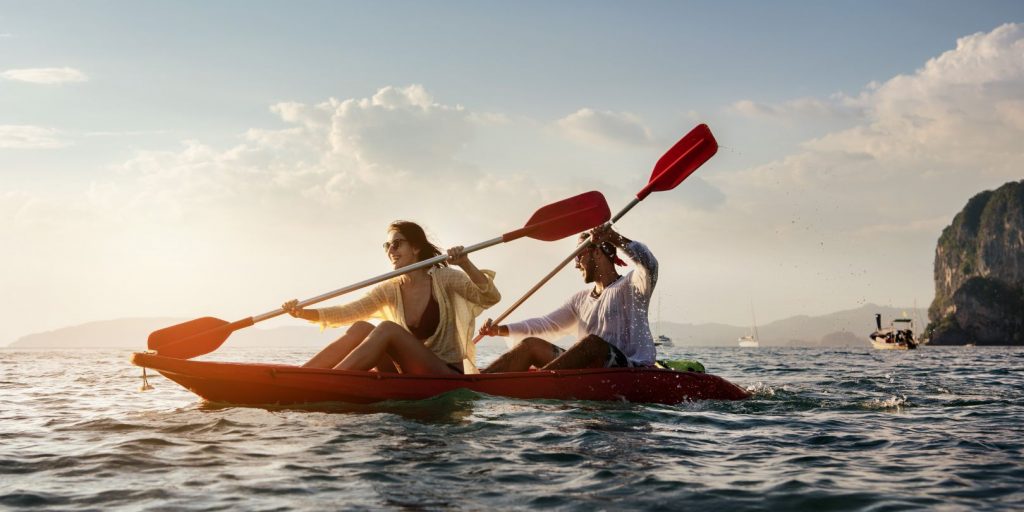
- 1 Basics of Ocean Kayaking
- 2 Preparations for Kayaking
- 3 Techniques for Ocean Kayaking
- 4 Kayaking in Different Coastal Areas
- 5 Advanced Kayaking Tips
- 6 Conclusion
If you’re looking for a thrilling adventure in the great outdoors, kayaking is the way to go. Nothing beats the feeling of exploring a wild coastline surrounded by the sounds of the ocean. With a kayak, you can access secluded coves and stunning views that you would never be able to experience otherwise.
In this article, we’ll discuss everything you need to know about sea kayaking, from the different types of kayaks to safety tips and the best places for kayaking. Whether you’re a novice or an expert, you’ll walk away from this article with more confidence to explore the seas.
Basics of Ocean Kayaking
When ocean kayaking, choose a suitable kayak, like a sea kayak , for its narrowness and stability. Tandem kayaks are great for two people paddling together, while sit-on-top kayaks require more effort but can work for ocean kayaking too.
Before your trip, gather all necessary gear, including a whistle, paddle leash, bilge pump, spare paddle, extra clothing, snacks, water, sunscreen , and a compass or GPS. Depending on the conditions, items like bear spray may also be useful. Ensure all safety systems are functional before departure.
Prioritize safety by bringing communication devices like VHF radios or cell phones. Consider carrying emergency beacons and flares for quick help in case of trouble. Have a plan for returning to shore if needed.
Preparations for Kayaking
Before embarking on your kayaking adventure, check the weather forecast, paying attention to wind speed, direction, and potential hazards. When planning your route, utilize coastal reports and charts to assess risks and consider currents and tidal flow. Choose a route that takes advantage of favorable conditions, such as wind direction and sheltered waters, while allowing for exploration.
Consider factors like current speed and tidal run to determine the offshore distance and the time you will need to return to shore or land. Planning will help ensure a safe and enjoyable ocean kayaking experience.
Techniques for Ocean Kayaking
Proper positioning is essential for stability in ocean kayaking. Position yourself directly above the kayak’s centerline to maintain balance from left to right, whether sitting still or paddling. This position ensures maximum control over the kayak’s movement.
When paddling forward, maintain a steady pace with each stroke, being mindful of changes in the wind or current. Avoid forcefully paddling on one side when turning, as this can cause the kayak to move against that side. Use alternating strokes from the left and right sides to navigate turns smoothly rather than pushing straight ahead with both paddles simultaneously.
When approaching turns, distinguish between changing direction and slowing down. Use opposite-side paddle strokes with equal effort for turns. To stop completely, apply less pressure with both paddles while gradually reducing your speed until the kayak stops.
Kayaking in Different Coastal Areas
Tidal estuaries offer enjoyable exploration opportunities in sea kayaking, with predictable daily ebb and flow. Take note of local tides and fishing times to avoid surprises while paddling.
Kayaking in open seas provides excitement but requires caution. Plan your trip with enough time before dusk or sunrise and identify safe landing points in case of unexpected winds. Respect marine wildlife like dolphins and whales.
Exploring rocky coastlines during sea kayaking unveils unique habitats. Wear protective gear and choose your routes carefully to avoid slipping on sharp surfaces. Watch out for strong currents that may unexpectedly carry boats back toward shore.
Advanced Kayaking Tips
Mastering the art of riding waves in a kayak takes practice and familiarity with wave patterns. Start with smaller waves and choose consistent paths for easier navigation. Position your boat towards wave crests, pulling away from troughs to avoid crashing.
When kayaking with others, bring a tow line for assistance and practice maneuvering together in controlled environments. Observe and replicate the techniques of experienced kayakers for smoother stops and turns. Maintain clear communication through words and hand signals.
We hope this guide gives you some valuable information for your next sea kayaking adventure. Remember to prioritize safety and be aware of environmental conditions during your trips. It’s essential to have emergency plans in place. With careful planning and precautions, novice and experienced paddlers can enjoy exciting experiences in coastal areas worldwide, creating lasting memories. Grab your tandem kayak, set off into the open waters, and embrace the adventures on the horizon.
Article Contributors
Sail magazine review team.
SAIL Magazine Review Team reports on best-selling products in sailing and boating. SAIL Magazine is reader-supported: When you buy through links on our site, we may earn an affiliate commission. Artificial Intelligence (large language models) may have been used in the research and creation of the content.
To ensure questions about product testing or a specific article are addressed, please contact [email protected]
Related Reads

How to Plan a Multi-Day Kayak or Canoe Trip
I’ve spent more nights under the stars – or laying under a boat when I’ve forgotten my tent fly again – than I can remember. From sea kayaking trips on Norweigian fjords to camping on river beaches in Nepal, and everything in between. Heck, just last week I got back from a multi-day canoeing river trip with friends, camping on islands as we went.
Along the way, I’ve picked up a whole load of tips and tricks. And the most important is to make sure you plan your trip properly. That way, you avoid surprises. So here’s my guide to planning a multi-day kayak or canoe trip.
Pick a Trip
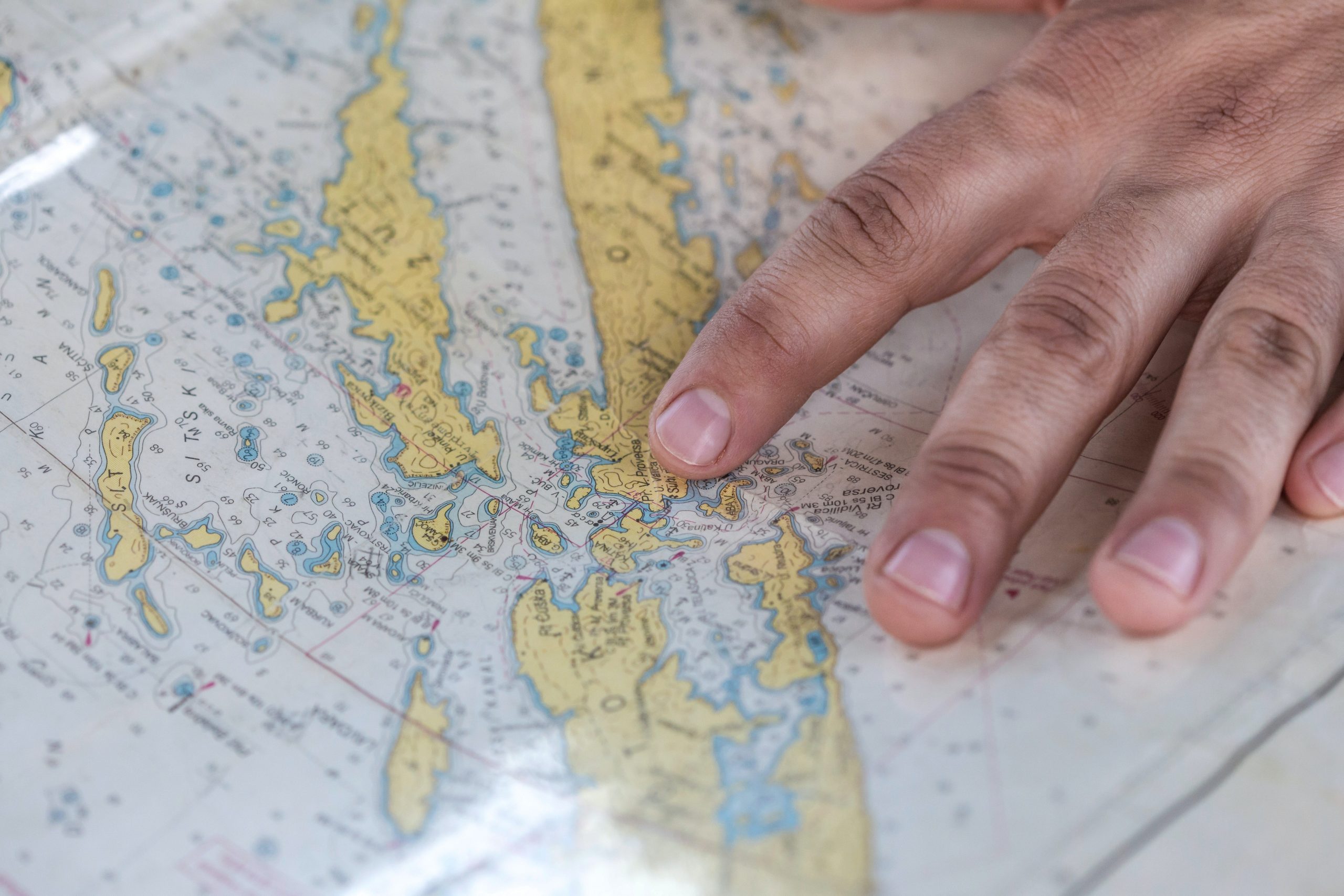
This is where I try to start planning for every trip I do. Every trip is different, even just slightly, so the sooner you have your chosen trip planned, the sooner you can start organizing it. Pick a guidebook up, check out the internet for ideas, or ask some local outfitters for their ideas on the best trips. You may also use this interactive map of places to go kayaking nearby.
The trip you chose will dictate everything. From the style of kayak or canoe you need to the equipment you will carry, the crew you take, and the skill you need on the water. You can’t start packing a tent just to decide on a trip that has no good tent camping and needs a hammock, right? Just like you can’t plan a sea kayaking trip when your whitewater kayak is already on the rooftop and ready to go.
Remember, the backcountry isn’t like your average day trip. If you’re new to overnight and multi-day trips, plan for a journey well within your capabilities. It’s not the place to be pushing your capabilities when you’re paddling a fully loaded boat and rescue is several hours away.
Research Local Guidance
Local knowledge is invaluable. Even if it’s a trip you know well if you’re traveling outside your local area get in touch with someone who lives locally. That way, you can find out about any recent changes, or anything you need to know that might affect your trip. Perhaps a mother bear has taken to raising her cubs where you were planning on camping, wouldn’t you rather know about that before you pitch up with your tent?
This local guidance can cover everything both on and off the water. Maybe there’s a campfire ban in place or a camping ban overall? What if a particular section of the river has changed, or a portage trail has been built that makes connecting two lakes easier? Really, if you’re not contacting the locals, you’re missing a trick.
Check the Conditions

As soon as there is a long-range weather forecast available, start checking it routinely. A little rain shouldn’t dampen your spirits, but strong winds can definitely affect your plans. Keep an eye on the conditions as they change on a daily basis, including river levels, lake conditions, tide times, tidal flow strength, and even things like sunrise and sunset.
Sure, these don’t all change daily. Sunrise and sunset are predictable, as are the tides, but they sure affect your journey. If you need to beat the tide, you might have to be planning to get on the water early on a particular day, or sit and wait out the wind until it drops in the afternoon. You may even consider turning your whole trip around and reversing the journey so that the wind is on your back?
In our kayaks, we’re never going to beat the environment. Sometimes, we have to accept that we need to postpone a day or wait a day out on the beach if we’re on a longer trip. But a regular check of conditions up to your day of departure can make sure you’re as prepared as possible for your overnight journey.
Check Your Crew
Are you flying solo, or are you part of a crew? If you’re going out with a group then there are certain things you need to check before you hit the water.
Firstly, is everyone in the group up to the level of the trip? As we said earlier, the backcountry isn’t a place to push your limits, so it’s a good idea to make sure you’re not asking too much of anyone or putting them in a position where they’re set up to fail.
If everyone is good to go, then it’s time to see what everyone’s bringing to the party. Is there one person taking lead on the journey – either on or off the water – or is everything going to be decided by the group? Everyone in a group has a role to play, even if it’s not obvious. Is one person particularly skilled at backcountry cooking? Has one person got medic skills? Maybe there’s a member of your group who is great at fixing things or navigating, or has some specialist kit that will make the journey that much more comfortable.
This doesn’t designate anyone a role, but by knowing what skills you have in the group then you can identify areas of weakness and plug those gaps, either with extra team members or developing those you have. Try not to get your team too big, while we’re at it. The more the merrier reaches a point where you’re trying to navigate a whole bunch of people and the trip becomes more about crowd control than kayaking.
Get Your Logistics Dialled

Do not leave this until the end. Many meticulously planned multi-day trips have come unstuck at the logistics stage, so get this planned as early as possible so that it’s out of the way and you can get on with the good stuff.
The logistics. How are you going to get everyone, all of their kayaks or canoes, and all of their gear , to the start of your trip? If you’re doing a linear trip, how are you going to get them back from the end?
This is where your crew comes in. Does anyone have a truck , or trailer , that can take multiple kayaks? Will you run a shuttle to leave a vehicle at the end of the trip, or will you use a local outfitter to run it for you and save you time?
However you do things, make sure you know where your keys are while you’re on the water. You don’t want to finish a great few days in your kayak to find that the keys to your shuttle vehicle are in the truck you left at the put-in.
Lay Out Your Gear

If you’re a serial tripper, you may know where all of your gear is. It might even be packed already – though if you’ve not unpacked since your last trip I recommend giving everything a good airing out. But for most of the world’s multi-day kayakers, gear gets put away in the garage or cupboard and has to be brought out for each trip.
Now is the time to check your equipment. Is your tent all in one place? Does it have all the pegs? Have you got enough gas to power your stove?
I would recommend laying out two piles of gear to check through. Have one pile of your kayaking gear, including what you’re planning to wear on the water, and any safety equipment – helmets , spare paddles , bilge pumps – there too. Then make a separate pile of camping equipment. Remember to check in with your crew at this point. There are some things that everyone needs – a sleeping bag, PFD – but some things – stoves, first aid kits – don’t need to be carried by everyone.
Here is a simple packing list, but feel free to add to it, alter it, and make it your own. It also doesn’t cover specialist equipment that you might need for fishing trips or safety gear for rivers or open-water touring.
Individual Gear
- Kayaking/Canoeing equipment – kayak/canoe , paddle(s) , PFD , cag, spray skirt , etc.
- Sleeping bag
- Tent – unless you’re sharing – or hammock, bivvy bag, tarp.
- Spare clothes – for off the water – weather dependent
- Spare footwear – for off the water
- Water bottle
- Personal medication
- Insect/bear deterrent
- Headlamp and spare batteries
- Spare paddles and on-the-water safety gear
- Tarp – always a good idea for cooking under, sitting under etc.
- First aid kit
- Firewood and fire starter – if permitted
- Saw/axe – if firewood collection is permitted
- Navigation equipment
- Water purification
- Toilet tube – trowel, TP, sanitizer – check local guidance for backcountry toileting
Pack Your Gear
When you’re certain that you have everything you need, it’s time to pack your gear. If you’re paddling a sit-on-top kayak or a canoe , you will most likely use a barrel or a large dry bag for the trip, and you can do this at home. However, we recommend packing sit-in kayaks – especially touring kayaks – at the water.
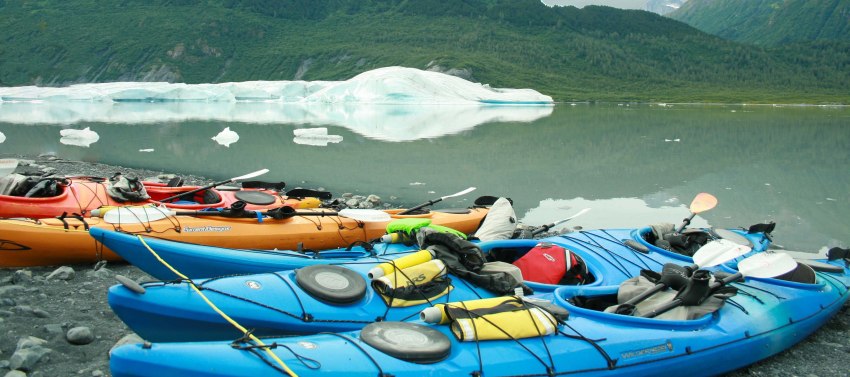
Your gear can easily add 25 lbs. of weight to your kayak. This doesn’t just make it harder to lift and load; the extra weight can damage your kayak while it’s in transit. But we do recommend a dry run at home, just to make sure everything is going to fit.
Whether you’re packing straight into a kayak, or into barrels or dry duffels , it’s a good idea to compartmentalize your packing using small dry bags.
This has two benefits. First, it makes it easier to find your gear, so when you get to camp you can pull out the right dry bag that has your stove, or tent in.
Secondly, it means that if there’s a little water ingress into your hatches, or you open your barrel in the rain, your gear isn’t going to get instantly soaked.
Try to pack your gear evenly into your boat to avoid offsetting the balance or trim. Overloading on one side of your boat can mean you have to constantly strain to keep your kayak flat. If you put too much weight at the front of your kayak, the bow will dig in and veer wildly around, but too much at the back and you’ll struggle to track into the wind.
Create a Float Plan
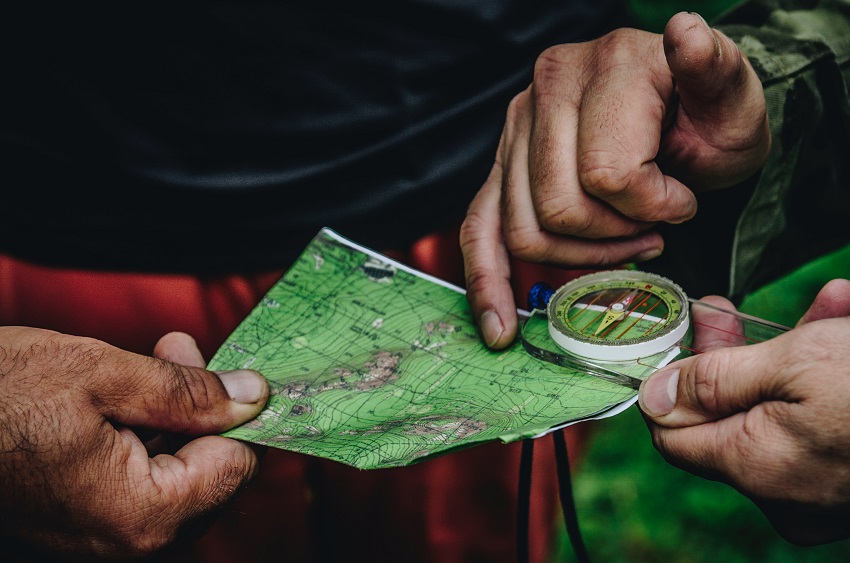
The float plan is your safety link to the outside world. These are important and even in the modern world where we all have phones, these can save your life. You never know, you might not have a cell signal, or your phone might die or take a dunking, so make sure you fill in a float plan.
If you’re not sure what a float plan is, check out our article here . But just briefly, these documents include your rough plan, your team members’ names and vessels, and your vehicle’s location and license plates. These should be left with a trusted friend or family member at home, along with instructions on what to do if you don’t return and how long to leave it before calling the authorities to start a search.
The critical thing here is to remember to get in touch with your home contact when you planned to. Plenty of search and rescue operations have been set into action only to find their believed casualties in a bar celebrating a great trip, having forgotten to phone it in at the end of their day.
Make a Plan B
Your trip shouldn’t be set in stone. When you’re planning your trip, be sure to check out alternative options that you can go for if the conditions change. These could include mid-trip changes and even the potential for hiking out to the truck if you really have to.
You have to be ready to change your plan when you’re going out kayak camping because even the most up-to-date weather forecasts aren’t always accurate. Don’t get too headstrong about your plan and force it when everything is going against you. Some of my best trips – looking back – have been the ones where I’ve been forced to change plans, it’s made me think outside the box and explore new places.
Start Off Gently

So you’re all set and ready to go. The big day is finally here. You’re excited. The crew is excited. But don’t set off at a million miles per hour.
Fully loaded kayaks and canoes are heavy and chances are you have a reasonably long way to go. Start off gently and ease yourself into the paddling until your muscles are warmed up. If you’re setting off straight into a strong headwind, tidal flow, or rapids, it’s never a bad idea to warm up.
You might feel a bit of a fool standing at the side of the river waving your arms around, stretching, and getting that blood pumping, but you’ll feel worse if you pull a muscle within five minutes of hitting the water. Remember to do this each day to avoid a mid-trip strain too.
Related Posts
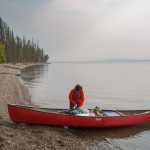
Our guide to canoe accessories covers recreational and tripping gear that you can take with you on your canoe trips.
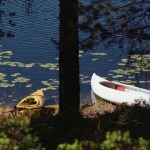
Both kayaks and canoes have been used for thousands of years. But which watercraft is better, and why? Let's find out!
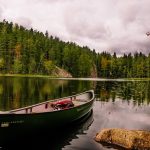
Tandem canoe is a sociable way to hit the water, with enough space and capacity for two adults to get comfortable and load up with all their gear.

In this article, we’ve got all the information you need to decide on the optimal kayak size. Discuss kayak sizes like a pro!
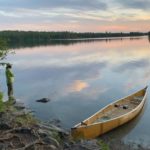
Canoe adventures are popular with many paddlers. This guide is a cumulation of tips, hints, and ideas to help you prepare for your next canoe camping trip.
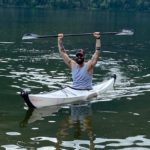
ORU Bay ST is a true masterpiece of design and craftsmanship, a seaworthy, highly versatile kayak that folds down into a box you can carry around.
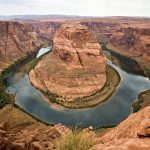
Arizona is the perfect state for year-round kayaking trips! We’ve gathered a list of the best places to go kayaking in the spectacular Grand Canyon State.
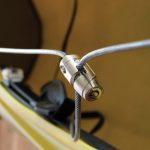
Here, we explain how to lock your kayak securely and then look at some great kayak locks to keep your kayak safe.
Tom "Moose" Kilpatrick
Moose started his paddling life on the ponds and rivers in the South-East of England. He has slowly worked his way north and has spent the last few years paddling in Scotland, both with friends and as a canoe guide. A very experienced and knowledgeable coach and guide across Scotland and the rest of the UK, he spent a summer in Norway and a month in Nepal. He is also a cofounder of PaddleMore.co.uk.
Leave a reply Cancel reply
Save my name, email, and website in this browser for the next time I comment.
This site uses Akismet to reduce spam. Learn how your comment data is processed .
PaddlingSpace.com is a participant in the Amazon Services LLC Associates Program. As an affiliate, we may earn a small commission (at no extra cost to you) when you purchase via our links. Thank you for supporting us!
418 BROADWAY STE Y ALBANY, NY 12207 (518) 533-5454
- Gear Catalog
- Kayak Reviews
- Gear Guides
- Terms and Conditions
- Privacy Policy
We monitor major online stores and alert you about sales, cool deals and price drops. No spam ever, unsubscribe at any time!


- 800-710-6657
- Call Admissions
- Gap Semesters
Sea Kayaking for Beginners with NOLS: Essential Tips and Techniques
Dec 8, 2023
As a beginner to sea kayaking, you might be wondering where to start -- that's where we come in. With years of sea kayaking instruction under our belt, we've got the answers to your burning questions and beginner kayaking tips to set you on course.
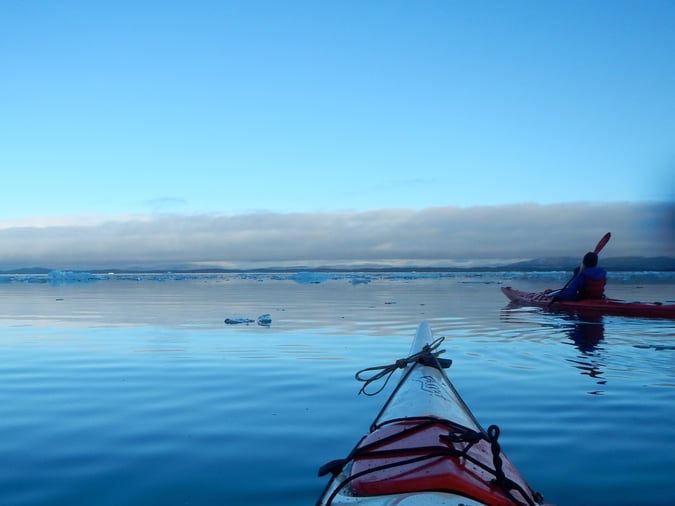
With NOLS, you'll not only develop essential beginner kayaking skills from paddling techniques to navigating the coastline with grace and efficiency, but you'll also have the opportunity to form a profound connection with nature, expand your leadership capabilities, and forge enduring bonds with your "pod" members.
Whether you're a whitewater kayaking adventurer eager to trade in those whitewater rapids for saltwater waves, a sea kayaking hobbyist ready to level up your skills, or completely new to kayaking in all forms, get ready to hone in on the fundamentals with our sea kayaking expeditions.
Is Learning How to Sea Kayak Worth It?
For beginner kayakers, the lists of terms, gear, and skills related just to the fundamentals can seem overwhelming, but rest assured that sea kayaking is not only a fairly accessible skill to learn, it's also a skill that grants you access to the coolest locations and a slew of abilities that can be leveraged in all areas of life.
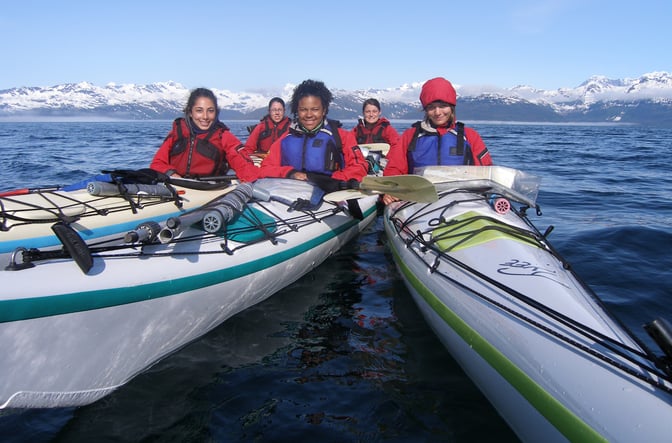
Gain Access to Unique & Adventurous Destinations
At NOLS, the sea kayak serves as a mechanism for wilderness exploration. Our expeditions open doors to extraordinary destinations, providing opportunities to connect intimately with nature and witness vibrant wildlife in new and unique ways.
Each sea kayaking destination promises a thrilling adventure and a unique tapestry of landscapes, wildlife, and conditions that make every stroke an immersion into the wonders of nature.
Sea Kayaking in Patagonia
In the rugged beauty of Patagonia, participants navigate steep-sided fjords that carve through the heart of a pristine wilderness. Gliding through these majestic waterways, you might encounter colonies of penguins, witness sea lion rookeries, or experience the exhilarating sight of sea lions swimming alongside your kayak. The skies are adorned with the majestic presence of albatross, while the ever-changing conditions add an element of unpredictability to the journey.
Sea Kayaking in Baja
Baja, with its enchanting coastlines, offers a kaleidoscope of marine life. As you paddle, be prepared to witness flying fish gracefully soaring above the water, sea turtles gliding beneath the surface, and the majestic presence of whale sharks and manta rays. As the sun sets, the sea comes alive with bioluminescence, transforming the waters into a mesmerizing display of natural light. Amidst this, the surrounding desert landscape adds a stark and stunning contrast to your sea kayaking adventure.
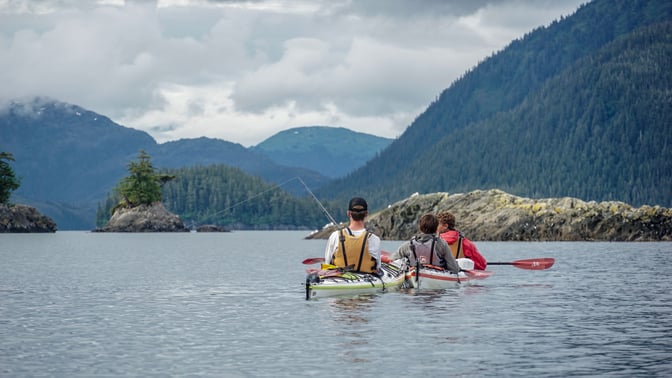
Sea Kayaking in Alaska
In the vast wilderness of Alaska, participants navigate through tide-water glaciers, marveling at their majestic beauty. The waters are teeming with life as humpback whales breach the surface, orcas glide through the depths, and sea lions playfully frolic in the surrounding waves. Sea otters bob in and out of view amongst the waves, adding a charming touch to the rugged Alaskan seascape.
Sea Kayaking in New Zealand
New Zealand, with its diverse ecosystems, provides a canvas for an unforgettable sea kayaking experience. NOLS runs courses in the Marlborough Sounds, renowned for its remarkable wildlife such as penguins, whales, and dolphins. As evening descends, you'll camp on secluded beaches nestled against lush forests, drifting into slumber to the soothing melody of gentle waves caressing the shore.
Whichever destination you choose, a NOLS sea kayak course promises not just a paddling adventure but an exploration of nature's wonders in some of the most secluded corners of the world. It's an opportunity to connect with the environment, witness wildlife in its natural habitat, and forge lasting memories in the midst of these remote and untamed landscapes.
Learn Self-Leadership and Quick Decision Making Skills Through Paddling
Beyond exploring vast oceans and coastlines, NOLS sea kayaking courses foster team-building and self-confidence among beginners and seasoned kayakers alike.
The teamwork required to navigate coastal waters and practice essential rescue techniques with those in your "pod" helps you develop strong communication skills, adaptability, and trust—essential qualities for effective self- and group-leadership.
Our sea kayak courses strike a perfect balance between adventure, personal growth, and enjoyment, providing an opportunity to enhance your skills and broaden your perspectives in some of the world's most remote and stunning locations.
Sea Kayaking Terminology for Beginner Kayakers
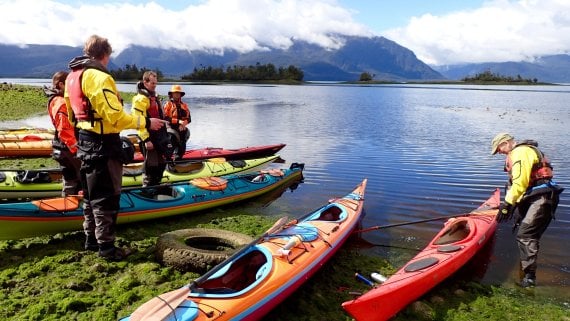
Developing basic knowledge and key terminology will help you communicate effectively with other kayakers when preparing to embark on your first sea kayaking trip. Familiarize yourself with these key sea kayaking terms to get you started:
Kayak Design and Components
- Sea Kayak: Compared to whitewater kayaks, sea kayaks are longer and narrower, designed for open water and coastal environments with features like bulkheads and hatches for extended kayaking trips. Sea kayaks prioritize tracking (maintaining a straight course) and efficiency for covering longer distances. Whitewater kayaks are shorter and more maneuverable, built for navigating fast-flowing rivers.
- Bulkhead: A compartment inside a kayak that creates a sealed compartment, often located near the bow and stern.
- Cockpit: This opening allows kayakers to sit inside kayaks.
- Deck Lines: Rigging on the kayak deck that is used for securing gear, providing handholds, and assisting with rescues.
- Hatch: A watertight compartment on a kayak, sealed with a hatch cover, used for storing gear and providing buoyancy.
- Kayak Paddle: A double-bladed paddle used by kayakers for propelling and steering their kayaks through the water. The kayak paddle comprises a paddle shaft and two paddle blades, one on each end of the shaft.
- Rudder: A movable fin or blade, often controlled by foot pedals, used to aid in steering the kayak.
- Skeg: A retractable fin near the stern of the kayak, used to improve tracking by reducing the impact of wind and current. Most sea kayaks have either a rudder or a skeg.
- Spray Skirt: A waterproof cover worn by the paddler that attaches to the cockpit. The spray skirt prevents water from entering the kayak cockpit while the kayaker paddles.
Paddling Technique Terms
- Forward Stroke: The primary paddling technique for propelling the kayak forward efficiently.
- Reverse Stroke: Paddling in the opposite direction of a forward stroke to slow down, stop, or move backward.
- Sweep Stroke: A wide, sweeping paddle stroke used to turn the kayak.
- Draw Stroke: A stroke used to pull the kayak sideways, useful for tight turns or moving parallel to an object.
- Sculling Stroke: A technique where the paddle blade is moved back and forth in the water to provide support or maintain balance.
- Bracing: A paddling technique used to prevent capsizing by using the paddle for support against the water.
- High Brace: A bracing technique with the paddle held horizontally above the water to prevent a capsize.
- Low Brace: A bracing technique with the paddle blade held horizontally close to the water's surface to maintain stability.
- Edging: The technique of tilting the kayak by shifting one's body weight, influencing the kayak's direction and stability.
Emergency Response and Rescue Terms
These techniques cover a range of emergency response and self-rescue methods, enhancing a kayaker's ability to handle various challenging situations on the water. While self-rescue techniques are essential for all kayakers to be proficient in, we advocate for a proactive approach to avoiding high-risk conditions.
While our courses prioritize the development of essential sea kayak self-rescue techniques, we also note that these skills should not be relied upon or used as an excuse to attempt sea kayaking in high-risk conditions. For a deeper overview of sea kayak self-rescue techniques, join us in one of our sea kayaking expeditions and courses .
- Self-Recovery Techniques: Skills used by kayakers to recover from a capsize and re-enter the kayak without assistance.
- Wet Exit: The process of intentionally exiting the kayak while in the water, typically performed in training for self-recovery scenarios.
- Re-entry: The process of getting back into the kayak from the water, a crucial skill in capsize situations.
- Assisted Rescue: Techniques where kayakers help each other recover from a capsize and re-enter the kayak.
- Towing: The method of using a tow line to assist or be assisted by another kayaker during a rescue situation.
- Scoop Rescue: A rescue method involving the assisting paddler using their kayak like a scoop to help the capsized paddler re-enter.
- X Rescue: A rescue technique involving two kayakers forming an "X" shape to stabilize and assist a capsized paddler.
- Paddle Float Rescue: Using a paddle float to create additional buoyancy for self-rescue or assisting others.
- Stirrup Rescue: A method of assisting a paddler in re-entry by using a stirrup or step to make the process easier.
- Cowboy Rescue: A self-rescue technique where the paddler flips the kayak upright and quickly climbs back in without assistance.
- Bilge Pump Use: Using a handheld bilge pump to remove water from the kayak after a capsize or wet exit.
Essential Kayaking Gear for Beginner Kayakers
In addition to the sea kayak and paddle mentioned above, the following kayaking gear items are must-haves for every beginner kayaker and seasoned paddler alike.
-1.jpg?width=672&height=446&name=Kayaking%20(1)-1.jpg)
Essential Kayak Gear
- PFD (Personal Flotation Device): This indispensable piece of gear serves as a personal buoyancy aid, functioning much like a life jacket. Worn by kayakers, the Personal Flotation Device enhances personal well-being while navigating the water and reduces the risk of drowning in case of capsize.
- Handheld Pump: A pump is a critical tool for efficiently removing water from a kayak after a capsize. Travel with the pump in a place that is secure and easy to access quickly.
- Paddle float: These are used to aid in self-rescue or to help another paddler get back in their boat. Sea kayaking paddle floats usually come in two styles: inflatable or foam. The inflatable floats take up less space. The foam floats can be a bit faster to use for novice paddlers. Travel with the paddle float in a secure and accessible location on your boat.
- Spare paddle: A spare paddle is necessary in the event of a capsize where you lose control of your paddle.
- Light source: Sea kayaks are low-profile vessels making them hard for larger boats to see. It is crucial to have a light source when navigating in conditions of darkness or low light. International COLREGS (Convention on the International Regulations for Preventing Collisions at Sea) asserts that white light is mandatory for nighttime operations, but it doesn't necessarily need to be continuously active—simply accessible when required.
- Marine flares: Marine flares are an efficient way to signal distress at sea. Make sure your flares are stored safely and check the expiration date before each trip.
- Tow rope (if traveling with another boat): Waist belt tow ropes with a quick release make it easy to tow another boat in need. The quick-release feature allows you to disconnect from the other boat in an emergency.
- Sound signaling device: A whistle is helpful for communicating with other paddlers. Coast Guard regulations may require paddlers to carry a sound signaling device that can be heard by other, often larger, boats.
- VHF Radio: A fundamental communication tool, the VHF radio is an essential component of sea kayaking. Used for both routine communication and emergency purposes on the water, it enables kayakers to stay connected with fellow participants and instructors, facilitating the swift initiation of rescue procedures if necessary.
- Wetsuit: Wetsuits are typically crafted from neoprene material for thermal insulation in cold water environments. The wetsuit's innovative design allows a thin layer of water to enter and form a warm buffer against the body, providing comfort and warmth in chilly waters. Note: Wetsuits are optional! They can be expensive and wearing a wetsuit can be avoided if you are deliberate about the kinds of conditions you paddle in (warmer water, mild conditions, with a partner instead of alone).
- Drysuit: Unlike the wetsuit, which provides insulation via a layer of water, drysuits are designed to use air insulation to keep the kayaker warm and dry. The drysuit is a waterproof, full-body garment that kayakers wear to stay dry in cold water conditions. This protective layer is crucial to maintaining body warmth and comfort during extended paddling sessions, particularly in cooler climates. Note: Drysuits are optional! They can be expensive. Purchasing and wearing a drysuit can be avoided if you are deliberate about the kinds of conditions you paddle in (warmer water, mild conditions, with a partner instead of alone).
A Deeper Look at Technical Skill Development With NOLS
Foundational paddling techniques.
Embarking on a sea kayaking adventure is an immersive experience, and at NOLS, we understand that the journey begins with mastering the art of paddling.
Our comprehensive sea kayaking courses place a strong emphasis on developing foundational techniques needed to paddle correctly and form the bedrock of your skills.
1. Forward Stroke Proficiency
The forward stroke is the engine that propels your kayak forward, and at NOLS, you'll practice and become proficient in the basics. Instructors guide you through the nuances of a powerful yet efficient forward stroke, teaching you techniques to help each paddle stroke maximize your speed and minimize energy expenditure. You'll learn the proper torso rotation, paddle placement, and follow-through techniques contributing to a smooth and efficient glide through coastal waters.
2. Corrective Strokes to Regain Control
Navigating through currents, winds, and varying water conditions demands a repertoire of corrective strokes. Our courses focus on developing corrective techniques such as sweep strokes, draw strokes, and rudder strokes. These strokes enable you to maintain control, make precise turns, and navigate through obstacles with finesse.
Understanding the dynamics of each corrective paddle stroke is fundamental to becoming a skilled sea kayaker, and our instructors provide hands-on guidance to help you grasp these techniques effectively.

3. Bracing Techniques for Stability
Maintaining stability on the water is important in preventing capsizing, especially when faced with unexpected challenges. NOLS sea kayaking instructors teach essential bracing techniques that enhance your ability to recover from a potential capsize.
Whether it's a low brace for maintaining balance in choppy waters or a high brace for stability in turbulent conditions, you'll develop the muscle memory and confidence needed to keep your kayak upright.
4. Efficient Maneuvering with Edging
Edging is a nuanced skill that adds a layer of finesse to your paddling. Our instructors guide you through the art of edging your kayak, allowing you to tilt it slightly to one side.
This technique enhances your maneuverability, enabling you to turn more efficiently and navigate through tight spaces with ease.
With practice, you'll gain a deeper understanding of how your kayak interacts with the water in various positions, contributing to a more intuitive and enjoyable paddling experience.
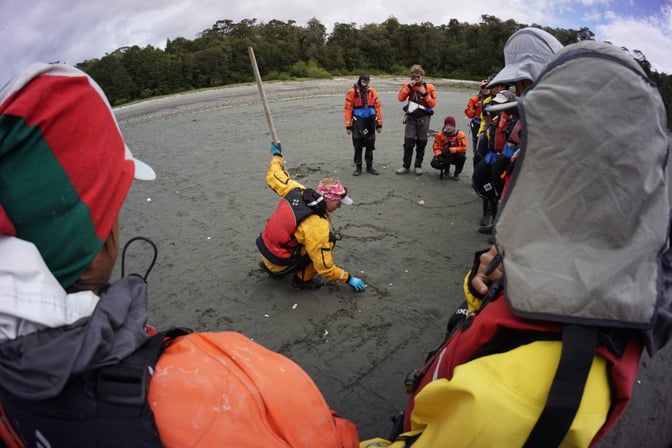
Coastal Navigation Basics
What's awesome about NOLS sea kayaking expeditions, in particular, is that you'll get to use sea kayaking to explore the wildest, most beautiful, and remote coastal locations on our planet.
During a NOLS sea kayaking course, you will learn key coastal navigation skills that help you explore these locations more effectively.
Additionally, navigating in the challenging coastal environment will develop your communication, decision-making, and problem-solving abilities. As you become more proficient in coastal navigation, you'll gain confidence in your ability to help your pod plan routes, estimate travel times, and adapt to changing weather conditions.
Our focus on these essential navigation skills will provide a solid foundation for further sea kayaking adventures and recreational paddling along various coasts.
1. Chart Reading and Interpretation
Navigating coastal waters begins with the ability to read nautical charts accurately. NOLS courses provide a comprehensive understanding of the symbols, contours, and annotations found on these charts.
Instructors guide participants through the intricacies of chart reading, empowering them to interpret information crucial for coastal navigation. From identifying underwater features to understanding depth contours, you'll gain the skills needed to navigate effectively along the coastline.
2. Tidal Dynamics and Planning
Tidal patterns play a significant role in coastal navigation, influencing water depth, current strength, and potential hazards. NOLS courses immerse participants in the study of tidal dynamics, teaching you how to read tide tables and predict tidal movements.
Understanding the ebb and flow of tides becomes essential for planning routes, exploring tidal zones, and effectively navigating through shallow areas. This knowledge is a key component of becoming a confident coastal kayaker.
3. Route Planning for Coastal Exploration
Planning a route along the coastline also involves taking a strategic approach that considers currents, wind patterns, and potential points of interest.
With NOLS, you'll learn key route-planning skills like how to identify suitable landing sites, plan for potential challenges such as headwinds or tidal currents, and create a comprehensive navigation plan that maximizes the enjoyment of your coastal journey.
4. Practical Application through Coastal Expeditions
At NOLS, we believe in learning by doing. Our courses incorporate practical coastal expeditions, allowing participants to apply their navigation skills in real-world scenarios. Whether paddling through rocky coves, exploring hidden inlets, or navigating around coastal features, you'll have the opportunity to put your coastal navigation knowledge into practice, reinforcing the skills acquired in the classroom.
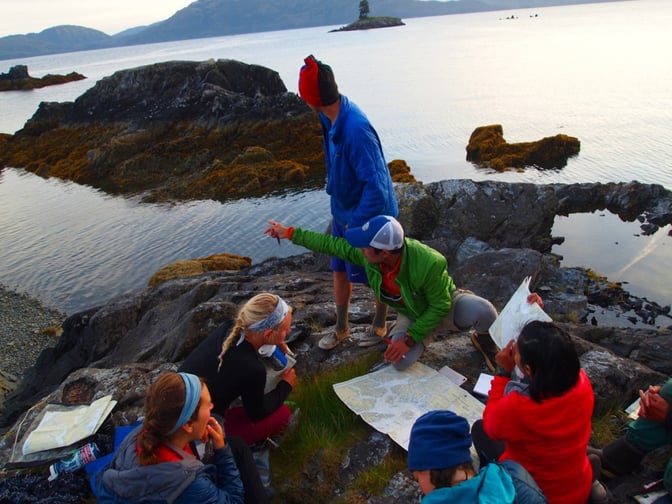
Reading the Elements: Water and Weather Conditions
Embarking on a sea kayaking adventure involves not only navigating through water but also understanding the ever-changing dynamics of weather.
Learning how to interpret water and weather conditions properly is essential when it comes to assessing risk conditions and creating enjoyable experiences on the open sea.
Our courses start with the basics and go beyond, equipping you with the skills needed to read the elements and make informed decisions while paddling.
1. Interpreting Water Conditions
Understanding the language of the water is fundamental for any sea kayaker. Our instructors provide you with insights into interpreting water conditions, whether it's deciphering the movement of currents, recognizing wave patterns, or identifying potential hazards beneath the surface. By developing a keen awareness of water dynamics, you'll be better equipped to navigate with confidence and awareness in various coastal environments.
2. Weather Awareness and Forecasting
Navigating the open sea requires a solid understanding of weather patterns and the ability to anticipate changes. Delve into the principles of weather systems and learn to interpret cloud formations, wind direction, and barometric pressure.
With the hands-on experience of a NOLS course, you'll gain the skills needed to analyze weather forecasts, make real-time assessments, and plan your sea kayaking adventures based on current and forecasted weather conditions.
3. Wind and Its Impact on Paddling
Wind is a significant factor in sea kayaking, influencing both the difficulty of paddling and the risk conditions of your journey. NOLS courses provide insights into the effects of wind on kayaks, teaching techniques to paddle efficiently against headwinds and harnessing the wind for assistance when needed.
Understanding wind patterns and their impact on the water is essential for making strategic decisions during your sea kayaking expeditions.
4. Coastal Microclimates
Coastal environments are renowned for their diverse microclimates, where conditions can vary significantly over short distances. NOLS courses highlight the importance of recognizing and adapting to coastal microclimates.
Whether paddling along cliffs, through sheltered coves, or across open bays, participants learn to navigate these dynamic environments with an understanding of how microclimates can influence wind, temperature, and overall weather conditions.
5. Decision-Making in Changing Conditions
Risk management is paramount in sea kayaking, and at NOLS, we emphasize the importance of making informed decisions based on changing water and weather conditions.
Participants learn to assess risk factors, modify their plans when necessary, and prioritize well-being without compromising the enjoyment of their journey. Our instructors guide you through practical scenarios that simulate changing conditions, allowing you to practice informed decision-making in a controlled environment.
Beginner Kayaking Tips: Getting Ready for Your First Sea Kayaking Trip with NOLS

Mental and Preparation for Beginner Sea Kayakers
Embarking on your first sea kayaking trip is an exciting venture into the realm of adventure and personal growth. To set yourself up for a rewarding experience, consider these beginner kayaking tips to help you prepare. Preparing both physically and mentally will not only enhance your enjoyment but also set the stage for a successful journey into the world of sea kayaking.
Physical Readiness
Preparing for your first sea kayaking expedition with NOLS doesn't demand the same aerobic threshold as backpacking or climbing.
Unlike these activities where speed may be influenced by individual fitness levels, sea kayaking relies more on efficient paddling techniques than sheer strength or typical fitness markers. Fast backpackers often find themselves paddling at a similar pace to everyone else, emphasizing that success on the water is more about mastering the right techniques than pushing physical limits. To prepare yourself physically, engaging in simple movement exercises should be enough.
At NOLS, we start by prioritizing practice sessions in calm, shallow water to help you familiarize yourself with efficient paddling movements, allowing your muscles to adapt and enhance their memory for the journey ahead.
By emphasizing technique over sheer strength, you'll discover that sea kayaking is an accessible and enjoyable adventure for individuals of various fitness levels.
Adopting a Growth Mindset
Approach your first sea kayaking trip with a growth mindset—a willingness to embrace challenges, learn from experiences, and celebrate the process of improvement. Sea kayaking may present moments of uncertainty, especially for beginners, but viewing these challenges as opportunities for learning can turn obstacles into achievements.
Some tips for adopting a learner's mindset include:
- Be open to new experiences and willing to try new techniques.
- Accept feedback from your course leaders and fellow participants.
- Focus on the present moment and soak in the natural beauty of the environments you paddle through, such as hidden coves and star-filled skies.
Embrace the learning curve with enthusiasm. Cultivate patience and resilience, recognizing that growth often occurs outside of your comfort zone. The more open you are to new skills and experiences, the more rewarding and transformative your sea kayaking journey will become.
Start Planning Your First Kayaking Trip in Coastal Waters
Unleash the paddler in you, explore the beauty of coastal waters across the world, and discover the incredible potential that sea kayaking holds for your mind, body, and soul.
Your adventure begins now—explore NOLS sea kayaking expeditions and make waves in the world of sea kayaking!
What essential skills do I need to learn before starting sea kayaking?
As a beginner, you will need to learn basic paddling techniques, understanding of tides and currents, navigation, and self-rescue procedures. Sea kayaking is relatively easy to learn, and with proper instruction, you'll develop confidence quickly. When you join a NOLS course, we'll teach you these essential skills to help you prepare for your sea kayaking adventure.
How does participating in a NOLS course prepare me for sea kayaking?
A NOLS course emphasizes personal growth, leadership development, risk management, and environmental stewardship. Along with teaching technical sea kayaking skills, our instructors focus on developing your leadership abilities. Paddling serves as a mechanism for exploring remote and captivating locations. We tailor our lessons to your skill level, making the courses accessible to total beginners and more experienced students alike.
What are the precautions to consider when attempting sea kayaking as a beginner?
While embarking on a sea kayaking journey, it's essential to consider risk management. As a beginner, you should be accompanied by experienced kayakers or instructors who will guide you in assessing potential risks and applying proper risk mitigation strategies. NOLS strongly emphasizes risk management and awareness in our courses, giving you confidence in making informed decisions while out on the water.
What are the physical requirements for new kayakers embarking on ocean kayaking?
Sea kayaking requires a moderate level of physical fitness, as you'll be paddling for extended periods and potentially encountering changing weather conditions. You'll also need strength and flexibility to execute various paddling techniques. As you embark on a NOLS course, we'll guide you through proper technique and help you develop the necessary physical abilities for a successful sea kayaking experience.
How long does it typically take for a novice to comfortably handle a kayak in the sea?
The time it takes for a novice to feel comfortable handling a sea kayak depends on the individual's learning pace and prior experience. However, with proper instruction and practice, many beginners can become confident in handling a kayak within a few days. By participating in a NOLS course, you'll receive comprehensive instruction, practice in real-life conditions, and ongoing support to help you build confidence and proficiency in sea kayaking.
- Sea Kayaking

NOLS is a nonprofit global wilderness school that seeks to help you step forward boldly as a leader.
Recommended
Capturing alaska, one photo at a time.
- Andrew Bobilya: Taking the Classroom Outdoors
- Educator Expedition: Reading the Rapids on the Colorado River [Video]

I grew up in a small village engulfed by jungle—Oxkutzcab, Yucatan in Mexico. I spent half of my life there. It allowed me to interact and learn alongside turkeys, cats, chickens, piglets and many other animals in the middle of the forest. Ever since, I have kept the outdoors in my life and now with cameras, a couple SD cards, and the support of sponsors, I get to tell the stories of my adventures through still photography and documentary film.
The Best Kayaking Apps for 2024
By David De Haan
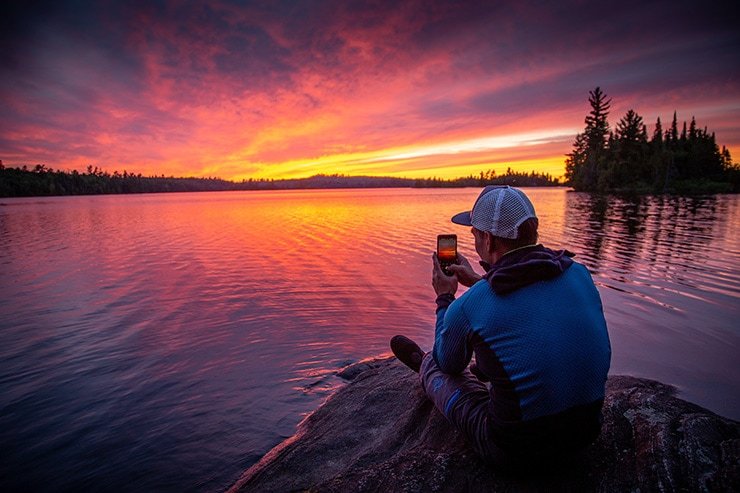
While kayaking can be done low tech – there is a selection of applications or programs you can put on your phone that can be immensely helpful for any kayaker. In this post, we’ll cover some of the best kayaking apps for 2024 and beyond.
Is There An App for Kayaking?
There are tons of kayaking apps out there, but not all of them are created equal. Let’s take a look at the best kayaking apps to help enhance your next paddling session.
1. Polaris GPS
Available only from google play here
This app is only available on android, but it’s free to use and takes advantage of your phone’s built-in GPS signal technology. This is a great app to help plan your kayaking journey, and can give you access to marine charts , as well as useful things like accurate water depth readings .
One thing to be aware of with the Polaris GPS app, however, is that sometimes default battery saving settings can mess with the GPS tracker function that’s built into your phone. This can cause the app to give slightly inaccurate GPS readings. If you plan on using this app, it’s something to take into consideration.
However, this is a small downside and is mostly made up for by the fact that this kayaking app is completely free!
2. RiverApp
Available here for both apple and google play here
RiverApp is another fantastic kayaking app that keeps you updated about vital information like water conditions, water temperature, and water levels, and allows you to look at different river routes or detailed maps.
This is considered one of the more popular kayaking apps and for good reason.
There is a free version and also premium options. You do get access to more features for spending a little cash – but regardless, it’s a great app for any kayaker and considered one of the best apps for accurate, up-to-date knowledge about rivers in not just North America but in Europe as well.
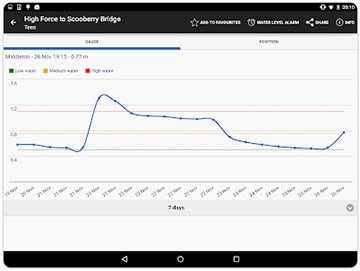
3. Go Paddling
Available on google play here Available on apple here
This is another free app that offers information on over 25,000 paddling routes to plan your next kayak trip. The Go Paddling app offers detailed information on existing routes, and it can also help you locate a good launch point for different routes.
Users can also add their data and information that others can make use of.
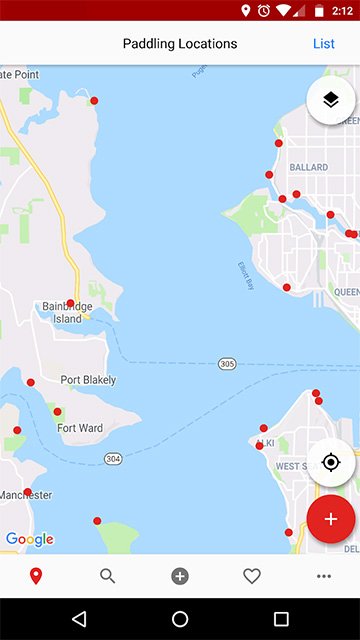
4. NOAA Weather Radar
Available on google play here Available on apple here
Most smartphones have weather information services built in, but when it comes to being on the water – you need something a little better. This is where the NOAA Weather Radar app comes in very handy.
The NOAA map gives you some detailed radar images, and useful weather information that’s updated in real-time – all great information for kayakers! If there are any storms close enough, you’ll get information on their predicted path and figure out what your options are or change your plans.
The app also gives severe weather warnings so you won’t be accidentally caught up in a dangerous storm.

5. River Data
Available only on apple here
This kayaking app (although it’s also used by everyone from fishermen, to scientists, and all sorts of other paddlers in between) provides tons of data on over 14000 rivers. Anything from the water temperature to how oxygenated the water is!
The information is regularly updated meaning this can be an invaluable app for all kinds of river kayaking trips. It’s a great tool to learn about water conditions before you’re even in, and it can help you navigate different routes.

6. CrewNerd
This app has both in-app purchases and carries a fairly hefty price tag ($49.99) on the app store. However, if you’re an athlete or dedicated to kayak fitness then this app is a complete package.
This is a kayak-tracking app that tracks just about everything – including using GPS tracking to calculate your overall distance and speed. It also gives you detailed data on your overall stroke rate and your heart rate.
Among the hardcore and coaches, it’s one of the most popular kayaking apps. However, for anyone not too concerned about maximizing performances for competitive events, this app might be a tad overkill (unless you’re fascinated by data).
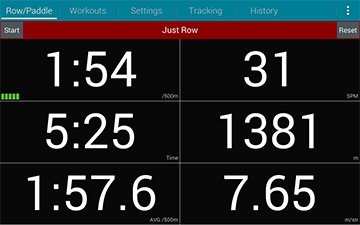
7. Stream Map USA
Only available on apple here
This app goes for $9.99 depending on how many regions you want to purchase on the app store, but this is one of the best kayaking apps for getting a comprehensive view of all the waterways in the USA.
While some apps focus on rivers, this app has everything – from rivers to small creaks. This app has navigation tools and you can also log your journeys. You can store maps for later use if you so wish – it’s a very good tool for planning.
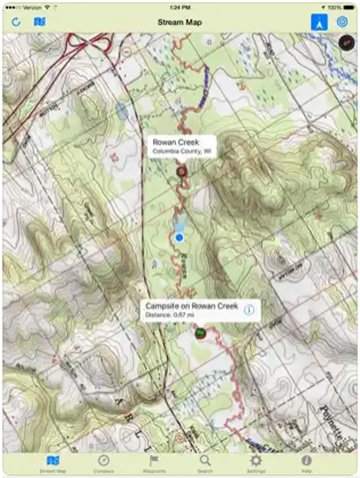
8. BoatCoach
Only available on google play here
This app’s original purpose is to provide data for rowing – including heart rate, calories burned, distance, speed, and stroke rate. It can also be used by the more dedicated kayakers who are looking into metrics to improve performance.
BoatCoach comes with a maps feature and you can also live stream your workouts onto social media (if you’re into that sort of thing).
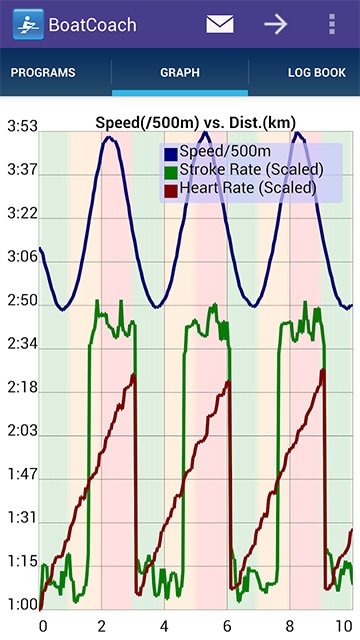
9. Paddling Magazine
Available on google play here Available on apple here
A bit less functional and a bit more entertaining. This app is the online version of the similarly named magazine.
You can download it for free but also sign up for a yearly subscription and enjoy updates about all kinds of paddle sports as well as some incredible stories and photography.
Paddling Magazine is one of the more popular publications in print for paddlesports and has a fairly large readership across the world.
10. Kayak Tracker
Only available on apple here
This app acts as a notebook or logbook for your kayaking adventures. You can learn the distance traveled and overall speed, and you can also get some information about the overall weather conditions of your journey.
Out of all the kayaking apps if you just want a place to log what you’re doing this is a good choice – it has a clean interface and gives you some space for notes and pictures of anything you saw on your route.
11. Paddle Paddle
Available only on apple here
Very similar to Kayak Tracker – this app also offers information about some routes you might not have taken. You can use this app to both plan and track journeys.
This app can measure your heart rate and gives you some detailed information about your speed (telling you when you were fast and when you slowed down).
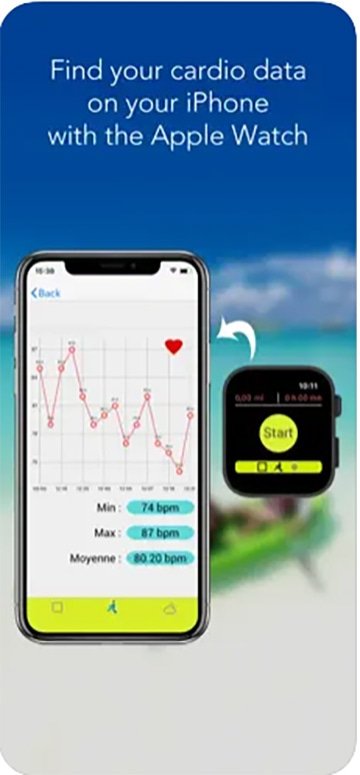
12. Accuweather
Available only on google play here
This is one of the best kayaking apps for smartphones that can support it. You’ll receive almost real-time data on weather conditions and immediate alerts in case of severe weather. If you’re someone who goes kayaking in the ocean then this kind of app is invaluable.
Practically every detail about the weather you could think of is covered – wind speed, wind direction, humidity, chance and volume of rain, visibility, and more. Knowing this kind of information is valuable to any ocean-going kayaker.
The best part is that this app is free! There’s no premium version limiting the important information. However, there are ads and in-app purchases available.
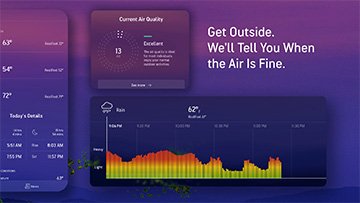
13. TIDES NEAR ME
This app is completely free and gives important information from tidal monitoring stations across the world. You can quickly learn when the time of the last tide, or next tide, will be. Plus, you can get accurate predictions of sunrise and sunset times.
Another incredibly useful app for anyone who likes to go ocean kayaking – plus you don’t have to pay a dime.
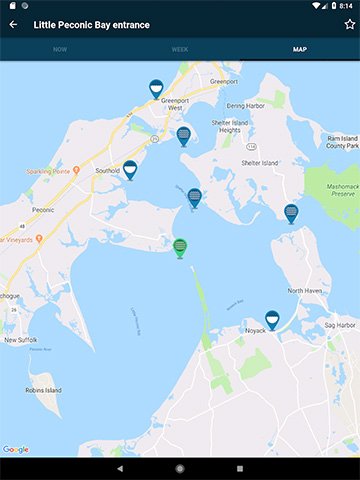
Can I Wear My Apple Watch While Kayaking?
You can wear an Apple watch when kayaking, but it depends on a few factors, is the short answer.
Apple watches (even the latest models) are water resistant to a degree , but high-velocity water conditions (like white water kayaking) can damage them.
So, you can wear your Apple watch but if you tip or capsize and depending upon the water conditions, the watch could break.
More gentle forms of kayaking on easier waterways are most likely to be fine but once you start heading into areas with less predictable conditions then there are fewer guarantees.
How to Track Kayaking on Apple Watch
There isn’t a default “mode” you can set your Apple watch to track kayaking, but there are apps you can use. The latest apple watch models ( especially the series 8 ) can make use of some of the Apple-supported apps above.
It’s recommended to download the apps through the watch interface itself because it can filter out automatically which ones will work with the watch.
The apps here have different developers and goals, and not all of them may be designed to work with the apple watch.
Can You Track a Kayaking Workout on Apple Watch?
You can track workouts with an apple watch and at the very least it’ll show you your heart rate and calories burned . However, to track the workout or get more detailed information on the distance you’re probably going to have to look into apps specialized for that kind of function.
They’ll be some that are compatible with the iPhone that will also work with the Apple watch.
How to Record Kayaking on Strava
The Strava app is one of the most popular apps all around for tracking workouts across a whole range of activities, kayaking included.
Using the Strava app to record kayaking is easy:
- Open the app scroll down until you find kayaking and hit the record button.
- Strava will then measure the distance, elevation, heart rate, and speed at which you moved.
- This works on the water just the same as on the ground .
Some people have reported that the app doesn’t work too well on their Apple watches.
Can a Fitbit Track Kayaking?
Technically the answer is yes, you can. Fitbit will attempt to track your kayaking if you wear it on your trip. However, the data you get back will very likely not be accurate – the other option is to log the activity manually but that doesn’t usually give much useful data either.
There’s been a vocal community requesting some kind of kayaking or paddling functionality be added but this hasn’t happened as of yet .
How to Track Kayaking on Fitbit Charge 3
You can use Strava to log your activity as a run from your Fitbit and then once the data is uploaded to your Strava account you can change the activity to kayaking.
The problem with this workaround is that it doesn’t always work – often the heart rate, calories burned, and distance are anything from slightly off, to completely incorrect .
That brings us to the end of the list! There are many kayaking apps available for both Android and iPhone that can provide you with valuable data to do anything from plan routes, log trips, or track your physical activity.
We hope that you enjoyed reading through this list and please share if you have any other apps that have revolutionized your kayaking experience.
Leave a Comment Cancel reply
Save my name, email, and website in this browser for the next time I comment.
Best Inflatable Kayaks Best Sit on Top Kayaks What size kayak do you need? Basic kayak paddle techniques Kayak safety tips
About us Contact us
1317 Edgewater Dr #4704 Orlando, FL 32804
(407) 974-5520
© KayakScout 2024
You are either using a browser that does not support JavaScript, or you have disabled JavaScript. OpenSeaMap uses JavaScript for its maps.
VAR 3.5°5'E (2015)
ANNUAL DECREASE 8'
- Map with JOSM Remote
- Tidal Scale
- Aerial photo
- Coordinate Grid
- Elevation Profile
- Marine Profile (1:920.000)
- Marine Traffic
- Compass Rose
- Depth contours (beta)
- Water depth
- OpenCPN (Kap)
- Navico (Lowrance, Simrad, B&G)
- Trip Planner
- Bridges/Locks

How To Plan A Kayaking Trip? What If You Don’t Have Any?
Planning a kayaking trip is always a thrilling moment filled with exploration and adventure. Kayaking offers a unique allure that captivates adventurers of all ages. This proposes a chance to escape the hustle and bustle of everyday life and connect with the wonders of nature.
As you paddle along the water, you’ll witness breathtaking landscapes, spot fascinating wildlife, and immerse yourself in the peaceful serenity of the great outdoors.
Nonetheless, it may seem a bit puzzling in your beginning days! Where, When, How – all these can be tricky.
This is why we put together this guide on how to plan a kayaking trip!
In this guide, we’ll show you how to plan an amazing kayaking trip step by step, ensuring a safe and enjoyable experience for adventurers of all ages.
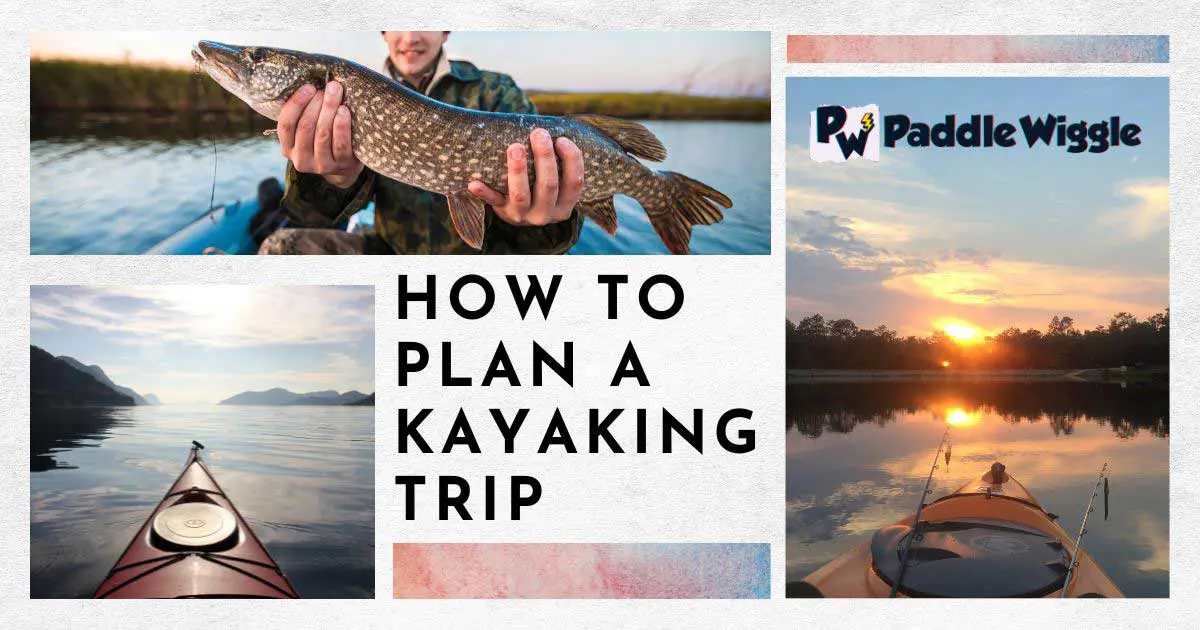
Why You’ll Need To Plan A Kayaking Trip?
Imagine you and your friends embark on an exciting kayaking expedition through a mysterious swamp. The air is thick with humidity, and the water beneath you is murky and filled with hidden secrets. As you paddle deeper into the swamp, the dense vegetation surrounds you, creating an eerie atmosphere.
Suddenly, a loud splash breaks the silence, and your heart skips a beat. You look around, trying to locate the source of the disturbance. Then, out of nowhere, a baby alligator emerges from the water, its scaly body glistening in the sunlight. It seems harmless, but little do you know that you’ve unknowingly ventured into its nest!
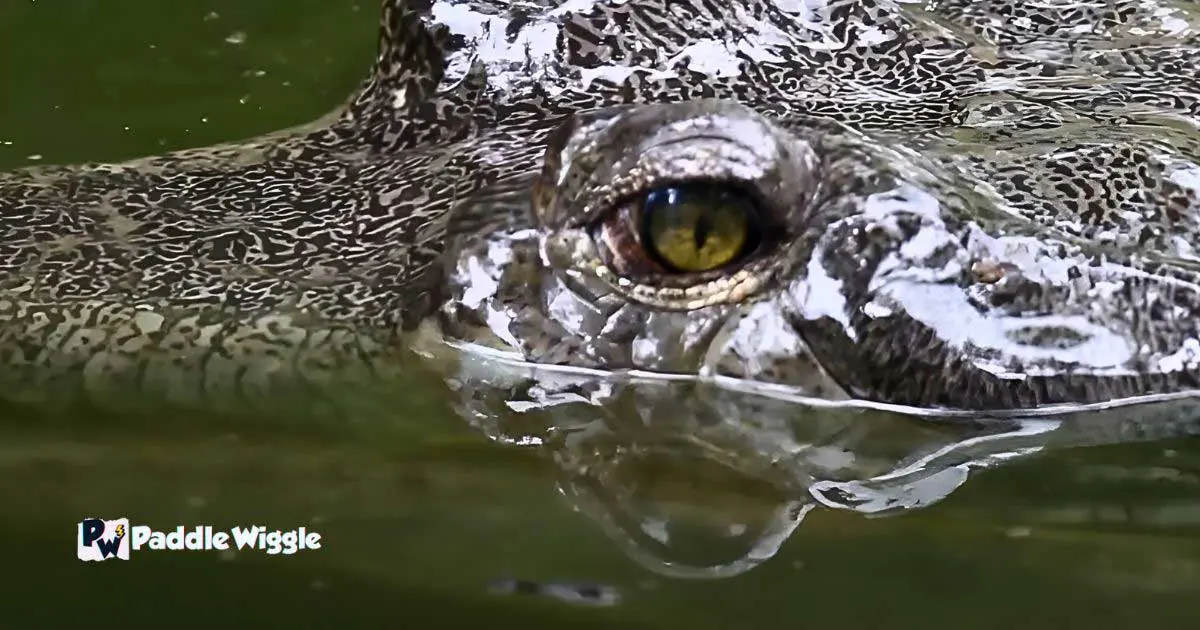
As you continue, the bursts of excitement intensify. You spot a pair of glowing eyes in the distance, reflecting the light of your headlamp. It’s the mother alligator fiercely guarding her babies! Panic rushes through your veins as you realize the gravity of the situation.
You’ve accidentally stumbled upon their territory, and the mother is not happy.
In this moment of shock, you realize the importance of proper planning. You recall the guidance you received before the expedition – the need to prepare and equip yourself for unforeseen encounters. The key lies in understanding the environment you’re exploring and taking necessary precautions.
And it’s all about planning! Your expedition depends on how well you plan the trip.
Proper planning ensures that you have the knowledge to navigate safely through unfamiliar territories. It includes learning about the habits and behaviors of the local wildlife, possible weather changes, and more.
That’s why you must plan your kayaking trip before heading to the water.
What Matters When Planning a Kayaking Trip
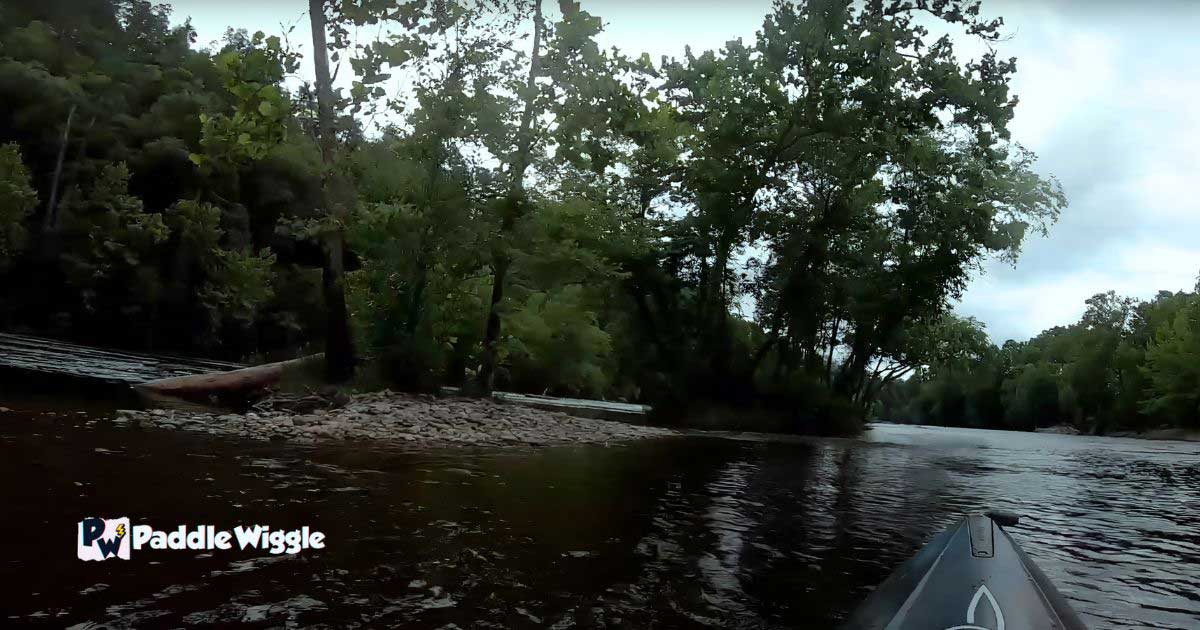
Planning a kayaking trip is like putting together a puzzle where each piece plays an important role. By paying attention to these factors, you’ll have a well-planned expedition that promises excitement as well as memories that will last a lifetime.
Let’s explore the key factors that matter when planning your exciting journey on the water.
Location, Location, Location
Choosing the Perfect Spot Picking the right location is like finding the best playground for your kayaking adventure. Consider the type of water you want to explore—whether it’s a calm lake, a winding river, or even the big waves of the ocean.
Think about what you enjoy most, like beautiful scenery or spotting interesting animals. Choosing the perfect spot sets the stage for an amazing experience!
Water Conditions
Understanding the “ rhythms of the waves ” is like the moods of the ocean or the river. Some people love the thrill of fast-moving rapids, while others prefer the calmness of gentle currents.
Knowing what you’re comfortable with is important, and choosing water conditions that match your skills is important. Understanding the rhythm of the waves ensures a safe and enjoyable ride.
Gear and Equipment
Tools for a smooth paddling trip are Just like a superhero needs their special gear, kayakers need the right tools too!
Your gear and equipment are like your trusty sidekicks on the water. A sturdy kayak, a paddle that fits you well, and a life jacket that keeps you safe are essential.
Don’t forget to protect yourself from the sun with sunscreen and wear a hat for added shade. Having the right gear ensures a smooth and comfortable journey.
Safety Consideration
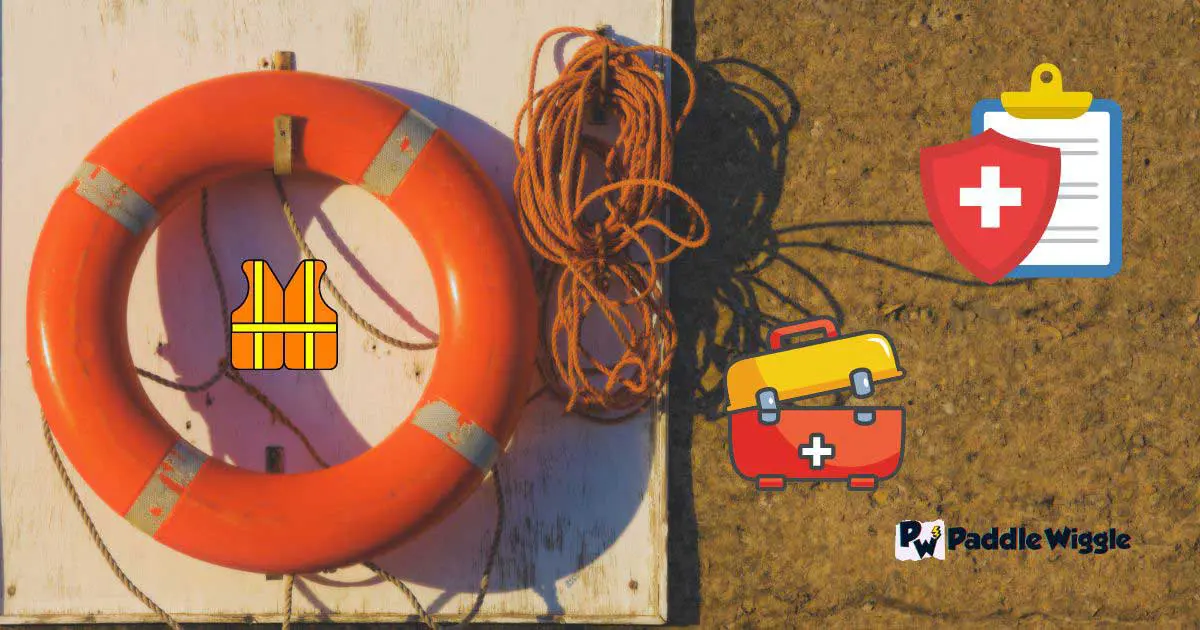
Remember the “ Golden Rule of Adventure is – Safety “. It’s the most important rule for any adventure seeker.
Understanding basic safety, such as avoiding obstacles and being aware of potential dangers, helps you stay out of trouble and enjoy your trip worry-free.
Always wear a life jacket, no matter how well you can swim. It’s like having a superpower that keeps you safe in the water!
Letting someone know about your plans is like having a backup team that looks out for you. They can come to the rescue if needed.
A step-by-step guide to planning a kayaking trip
Kayaking offers a fantastic opportunity to connect with nature and explore waterways of all types, from serene lakes to adventurous rivers. To ensure a safe and enjoyable kayaking trip, it’s crucial to plan ahead. This step-by-step guide will help you organize your next kayaking adventure:
Step 1: Choose a Location
Think about where you want to go kayaking. Do you prefer a peaceful lake, winding river, or even ocean? Pick a spot that excites you and matches your skill level.
Step 2: Plan Your Route
Decide where you want to paddle during your trip. Look at maps or ask for guidance to choose a route that suits your preferences . Consider how long you want to be on the water and any interesting places you’d like to explore along the way.
Step 3: Get Weather Updates
Keep an eye on the weather forecast before your trip. It’s important to choose a day with calm conditions and avoid strong winds or storms. Safety comes first!
Step 4: Pack The Must-Haves
Before heading out, pack some essentials. Bring water to stay hydrated, snacks to keep your energy up, and a waterproof bag to protect your belongings. It’s also a good idea to bring a first aid kit, just in case.
Step 5: Dive into the Adventure, Unleash the Fun!
Finally, it’s time to launch your kayak and dive into the adventure! Paddle confidently, soak in the breathtaking views, and take breaks to explore hidden coves and discover fascinating wildlife. Enjoy every moment and create memories that will last a lifetime.
Research and Choose a Suitable Destination
The first step of planning an amazing kayaking trip is researching and choosing the perfect destination. When selecting a kayaking destination, there are a few important factors to keep in mind. Here are three things to consider:
What to Consider When Choosing a Destination
Finding the perfect route for your skill level, research local rules and regulations.
First, think about your preferences. Do you want a peaceful, relaxing, exciting, adventurous experience? Consider the scenery you’d like to explore and the wildlife you’d love to encounter. Also, keep in mind the water conditions.
Beginners may prefer calm and gentle waters, while more experienced paddlers might seek a challenge with rapids or waves.
Also read: Is Kayaking Safe For Beginners?
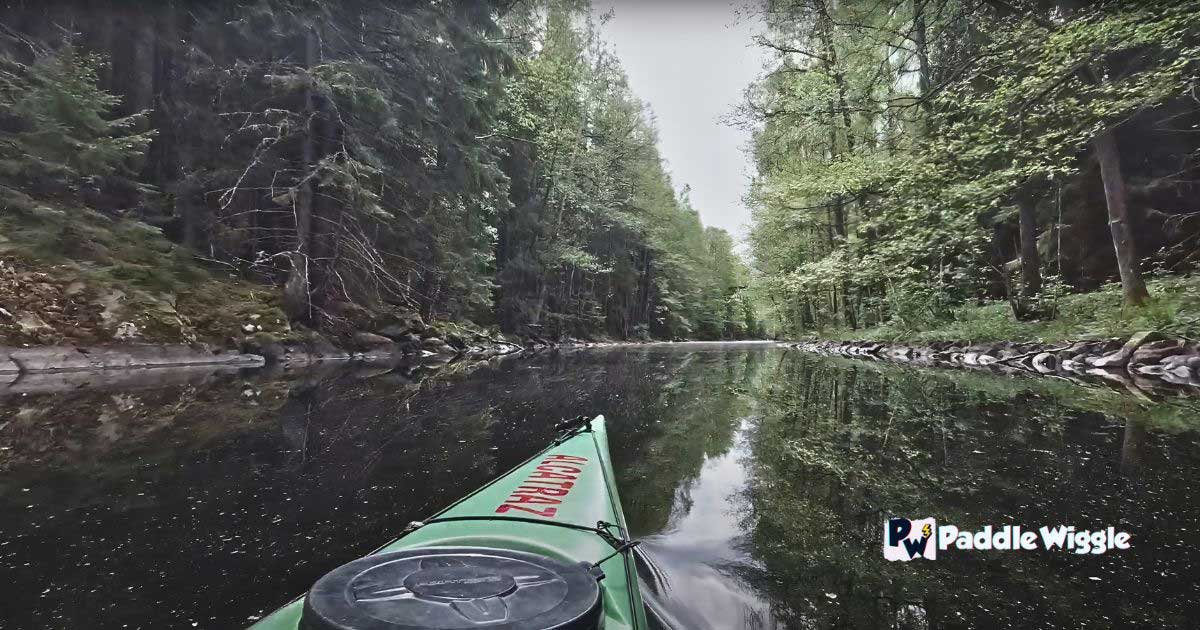
To determine the perfect route, you need to consider your skill level as a kayaker. Beginners should choose routes that are not too challenging, with gentle currents and minimal obstacles. Look for areas with easy access to the water and plenty of opportunities to practice your paddling skills.
It’s important to start with routes that match your abilities and gradually progress to more advanced routes as you gain experience and confidence.
Before finalizing your destination, make sure to research any local rules and regulations. Some places may require permits or have specific guidelines for kayakers. Following these rules is essential to protect the environment and ensure a positive experience for everyone.
What To Include In The Plan?
Here are a few crucial things to include in your kayaking trip plan:
Communication Plan
Packing checklist, safety measures.
- Weather Forecast and Environmental Factors
Make a plan to stay connected with others during your trip. Share your trip details and when you’ll be back with someone you trust. They can help you if there’s an emergency. You can also bring a cell phone, a waterproof case, or a two-way radio to talk to your group or ask for help if you need it.
Make a list of everything you need to bring for your kayaking trip. Don’t forget essentials like water, snacks, sunscreen, insect repellent, a hat, sunglasses, and clothes for different weather.
Remember to pack any special things you might need, like a waterproof bag for your stuff or a dry bag to protect your electronics.
Safety is really important. Include safety things such as; an emergency plan and GPS tracker in your plan to make sure you have a fun and worry-free trip. Always wear a life jacket that fits you well. Bring a first aid kit and learn some basic safety rules.
Get Weather Updates and Check Environmental Factors
It’s important to keep up with the weather and consider the environment when kayaking. This will improve your kayaking adventure and keep you safe and happy.
Let’s check it out!
Weather Conditions
When planning your kayaking trip, keeping an eye on the weather is super important.
Weather conditions like wind, rain, and storms can affect the safety and enjoyment of your adventure.
So, before heading out, check the weather forecast to ensure you pick a day with favorable conditions. And look for sunny skies, gentle winds, and nice temperatures for a more awesome time on the water.
Environmental Factors
Knowing about the environment is key to having a great kayaking trip. Here are some important things to think about:
I. Water Conditions
Pay attention to the water conditions, like currents, tides, and waves. Strong currents or big waves can make kayaking harder, especially if you’re a beginner. Choose spots with calm waters or conditions that match your skills.
II. Wildlife and Plants
Keep your eyes open for cool wildlife and plants you might see during your kayaking journey. Birds, fish, and other critters make the experience even more awesome.
But it’s more important to know potential dangers, give them space, and learn to deal with any sudden changes.
III. Hazards and Obstacles
Watch out for things that can be risky or get in your way in the water, like rocks, fallen trees, or hidden stuff. These things can be dangerous for you and your kayak. Plan your route to avoid them and have a smooth and safe ride.
Pack Only That Matters For The Trip
When packing for your kayaking trip, it’s crucial to focus on the must-haves. These items are essential for your safety, comfort, and enjoyment. Think about what you need and leave behind the things that are not necessary.
Here are some key items you should include in your packing list:
- Personal Flotation Device (life jacket): Always wear a properly fitted life jacket to ensure your safety on the water.
- Appropriate Paddles: Bring the appropriate paddles for your kayak and make sure they are in good condition.
- Food and Water: Pack snacks and meals that are easy to store and won’t spoil. Carry enough water to stay hydrated throughout your trip.
- Safety Gear: Include a whistle, flashlight, and a first aid kit to handle emergencies.
- Navigation Tools: Carry a map, compass, or GPS device to help you stay on course and find your way.
Optimize for Efficiency
To make your kayaking experience more enjoyable, aim to minimize the load on your kayak. Lighter kayaks are easier to paddle and maneuver. Choose lightweight gear and pack items that have multiple uses. For example, a multi-tool can serve various purposes, reducing the number of items you need to carry.
Additional Tips To Maximize Fun!
Maximizing the fun on your kayaking trip is all about enhancing your experience and making the most of the adventure. Here are some additional tips to help you have a fantastic time on the water:
Break Down the Itinerary
Now, let’s break down your itinerary into smaller parts. This means dividing your trip into manageable sections.
Think about the time you’ll spend paddling and the moments you’ll take to rest and relax.
Doing this gives you a well-balanced plan that keeps your energy levels high and prevents you from feeling overwhelmed during your kayaking adventure.
Add One More Activity, At least
Incorporate some fun activities into your kayaking trip. Consider bringing snorkeling gear to explore underwater wonders, or bring a fishing rod if you enjoy fishing. You can also pack a waterproof camera to capture the beautiful moments along the way.
Take Breaks for Exploration
Allow time for exploration and discovery during your kayaking adventure.
Take breaks to explore hidden coves, pristine beaches, or interesting wildlife habitats along your route. Remember to respect nature and leave no trace behind.
Pack Snacks and Treats
Bring along delicious snacks and treats to keep your energy levels up during the trip.
Choose lightweight, non-perishable snacks like granola bars, trail mix, or fresh fruits. Don’t forget to bring plenty of water to stay hydrated.
Capture Memories
Bring a waterproof camera or use a waterproof case for your smartphone to capture the amazing moments on your kayaking trip.
Take photos of the scenic views, wildlife encounters, and joyous moments with your friends or family.
Now that you know the important things about planning a kayaking trip, it’s time to put your knowledge into action and have your own amazing adventure! Whether you want to paddle on a calm river, explore a beautiful coastline, or glide through a scenic lake, there’s a whole world of kayaking waiting for you.
Don’t forget the tips we talked about in this guide. Research and pick a good place to go, plan your trip carefully, pack the important stuff, keep an eye on the weather, and enjoy the beauty of nature. When you do all of this, you’ll be ready to have the best kayaking experience ever!
As you start your journey, we wish you safe travels and incredible moments that you’ll always remember. Look at the beautiful sights around you, feel the peacefulness of the water, and enjoy the wonders of nature. Remember to take care of the environment, stay safe, and leave no trace behind.
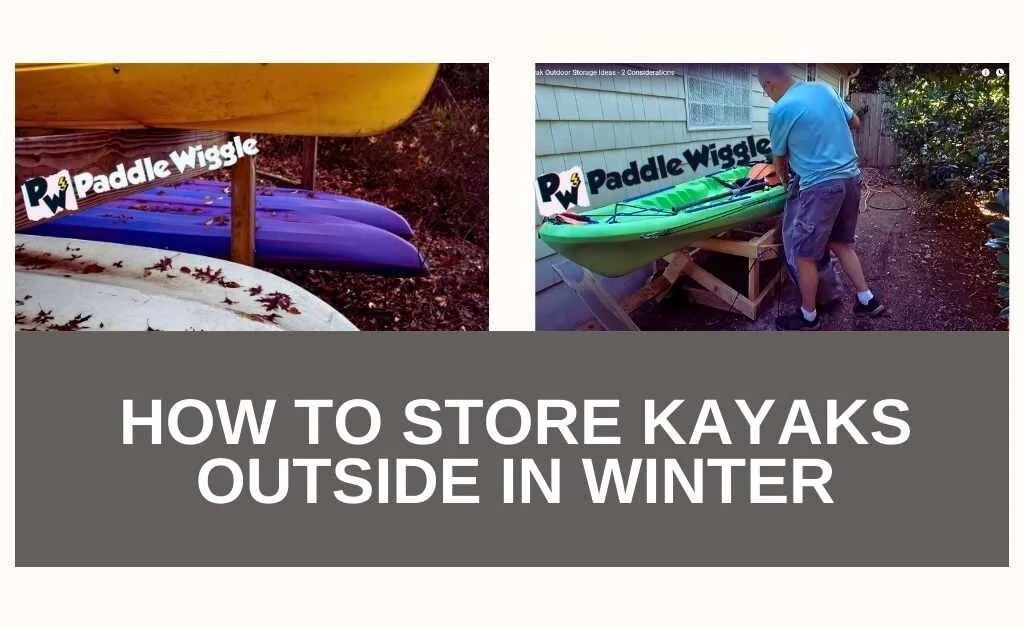
How To Store Kayaks Outside In Winter? [5 Effective Ways]
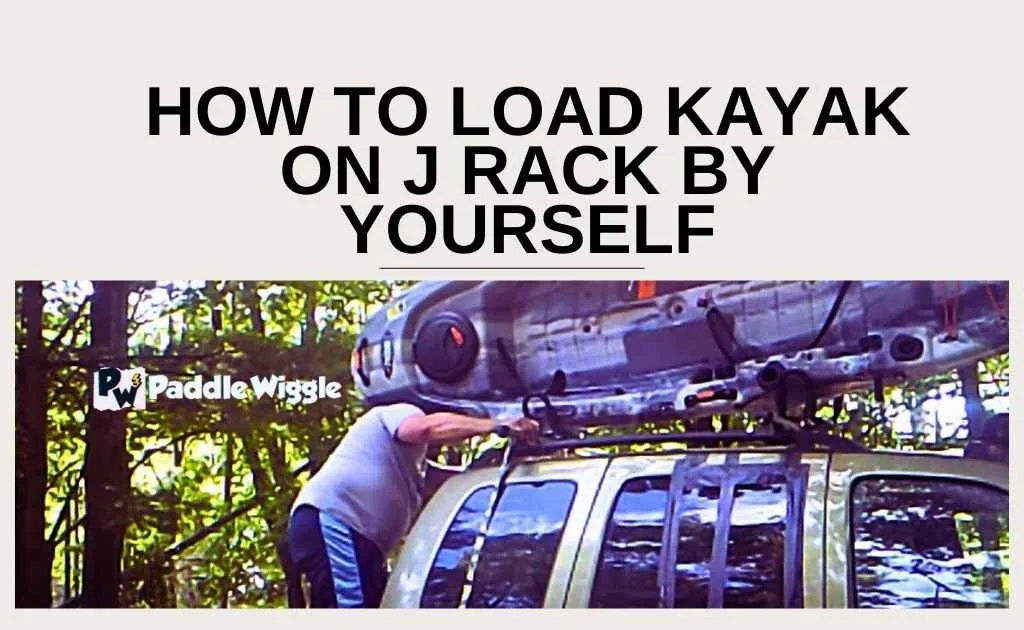
How To Load A Kayak On J Rack By Yourself? [Easy Steps]
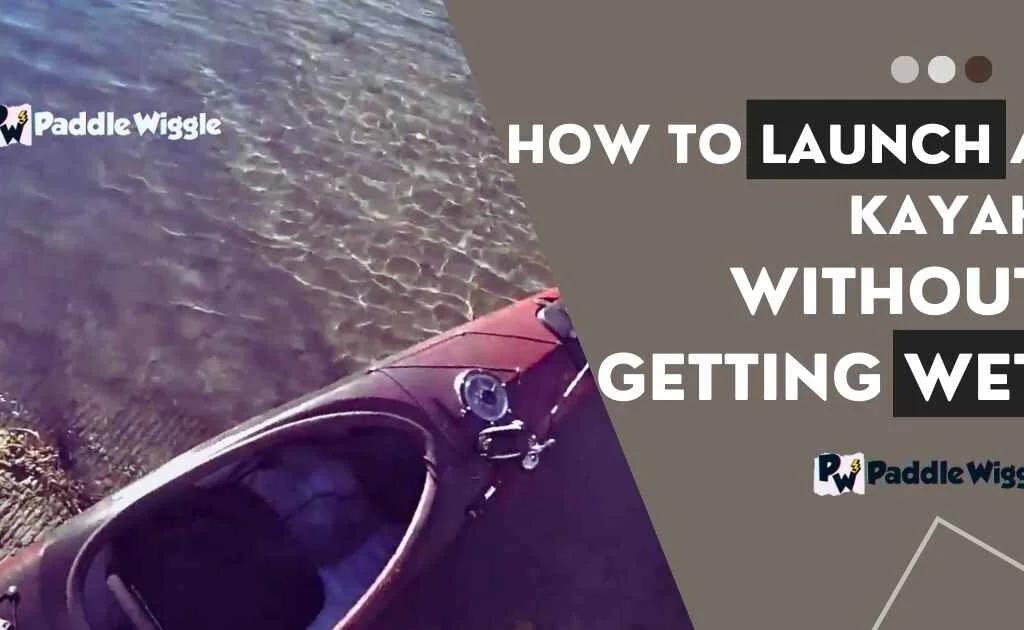
How To Launch A Kayak without Getting Wet – Expert Tips
Leave a comment cancel reply.
Your email address will not be published. Required fields are marked *
Save my name, email, and website in this browser for the next time I comment.
- Fishing Kayaks
- Paddle Boards
- Life Jackets (PFDs)
- Boat Storage
- Paddling Clothing
- Paddling Accessories
- Cool New Gear
- Submit a Review
- Paddling Near Me
- Paddling Locations Map
- Download the Go Paddling app
- Paddling Trips
- Kayaking Trips
- Canoeing Trips
- Share Your Knowledge
- Add a Paddling Location
- Add Your Trip
- All Articles
- Getting Started
- Boats & Gear
- Techniques & Safety
- Camping & Survival
- Join Newsletter
- Create Account
- Message Boards
- Classifieds
- Photo of the Week
- Free Weekly Newsletter
The Float Plan: A Vital Paddling Tool
A sudden sequence of bad weather caused two groups of kayakers to become overdue to the point Search and Rescue units were activated to find them. The first group was recovered within hours; the second group had to survive three days before being found. The difference? The first group had left a float plan behind, the second group had just charged off with out telling anyone where they were going or what their plan was.
Their "plan", that's the key. A float plan is an essential part of any kayak trip that has the potential for developing into a situation where you might not return when you hope to. Weather, injuries, lost gear can all lead to reasons why you can't return at an anticipated time. If you end up being overdue to the point of concern, will anyone know where you were? Would anyone know how to describe your party to aid rescuers into recognizing you in the field? All these questions can be answered by using a Float Plan.
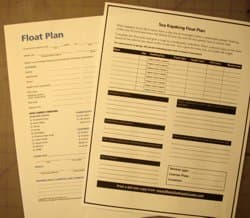
What to include in your float plan
As you can determine, a float plan is exactly what it says: a plan that tells others where you are going to go float (paddle, canoe, kayak, etc.). It provides information on group size, type of gear and color of gear used, special signaling devices to be anticipating and other pertinent information that would aid someone out in the field looking for you.
While float plans vary from organizational boilerplates to a home-made, common-sense listing, the essence of the plan is to adequately describe your group's itinerary (where are you going?, how long will you be there?, when and where will you return?), their description (number in party?, type and color of boats and PFDs?, other telltale visual factors), and what type and color (where critical) of accessories do you have (tents, tarps, other large visual elements? Knowing what means you have for signaling is also very useful (for example: PLBs, signal flares, VFH radio, cell phone)? All these factors will make if easier for rescuers to coordinate a search and save valuable time locating you.
Most float plans begin by including a roster of all members of the party : their names, age, gender and phone number. Part of the search and rescue procedure may be to contact each member's number to learn if that person has made any contact or if any additional information may be helpful.
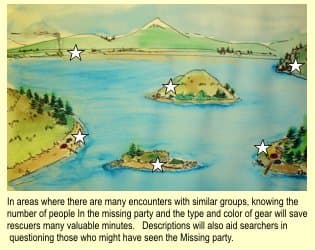
A description of the gear each person has is important, too. It is very helpful to know the type and color of the watercraft (yellow, single sea kayaks, for example) as well as the color of each one's life jacket. This is helpful in direct spotting or through questioning others in the area. Not knowing the color of the boats means extra time checking every craft in the search area.
Each person's skill level should be noted. Presuming prudent paddlers in a group would not jeopardize the safety of lesser-experienced paddlers - or if novices might respond to conditions differently - one can anticipate probable actions a group might have taken.
Back several years ago when Personal Locator Beacons (PLB) finally became legal in the US, a key part of introducing them to the public was the fact that each unit is registered specifically to an individual with all the necessary contact information recorded so the satellite knows exactly who it's "listening" to. Make sure that your information is all updated before you head out with your signaling units. That equipment should be recorded in your Float Plan as well.
Your trip itinerary is a key element in the plan. Where you departed from may be quite obvious, but include it anyway. Also record the anticipated time you will be in route, where you plan to camp. All plans need to be flexible so make sure any possible alternate routes are listed as well. A daily list of potential take-outs would be a big help to SAR units, especially if all the other information has been accurate.
In the case of traveling some distance before putting in, make sure you've described your vehicles including year, make, model, color and license. Placing your float plan document on the dash of your car is a good way to have it available to search and rescuers but also exposes you to those who might like to know how long your car will sit there unattended. Obviously you don't want to leave any valuables in it.
It's apparent that you are providing potential searches with as much information as you can to help them find you should such a situation arise. That's why it's important for you to anticipate any alternatives and include them as well. Obviously we don't always make our intended destination due to human or natural elements. Take the time to choose alternate routes or shorter take-out destinations.
In Alaska, a weeklong kayak trip through Kenai Fjords National Park included a fly-over of the entire route to mark potential emergency take-out beaches all along the course. We eventually had to hold over for three days in one of those spots hoping the pilot would remember that option as well. Anything that will limit the amount of second-guessing on the part of the SAR team will mean a quicker recovery time.
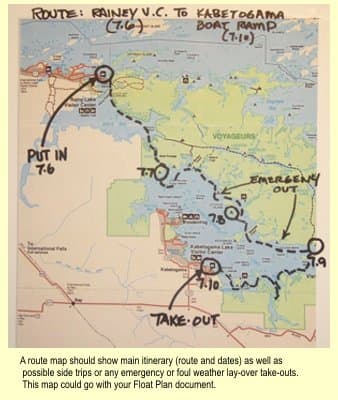
You can create and share a float plan using our Float Plan Tool . In addition, there are several other sites on the Internet that have boilerplate float plans. Just type in "kayak float plan" in the search window.
A key distribution of the plan is the last critical element. Leave one with each member to give to family or friends. It's common to drop one off at the harbormaster's office at the nearby marina. According to website warnings, the US Coast Guard does not accept float plans. I take that to mean they do not accept receipt of them but will obviously respond after the fact to information on them. Lastly, leave one in your vehicle at your launch site.
One often takes extended paddling trips to relax and rid one's self of the labors of life. A float plan may seem like excessive and needless paperwork, but it's far less traumatic than trying to be a survivor when no one knows you're missing or where to even start looking for you when you are overdue.
Float plans make sense. Please use one.
Related Articles
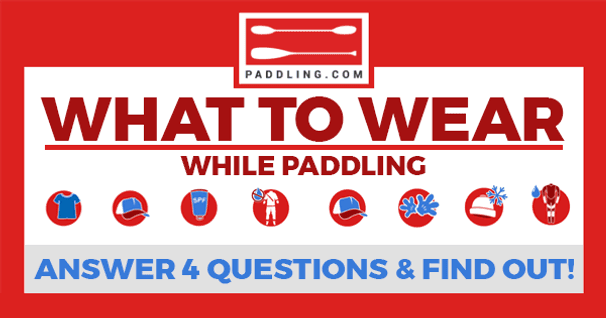
What To Wear Paddling?
Wondering what to wear when going paddling? Answer 4 quick questions and instantly learn what you need…
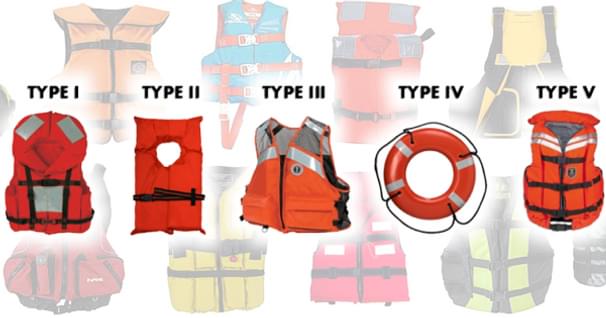
Life Jackets in the New World Order
Tom Watson reviews some of the changes that are in store for defining “Life Jackets” and “PFDs”? It’s…
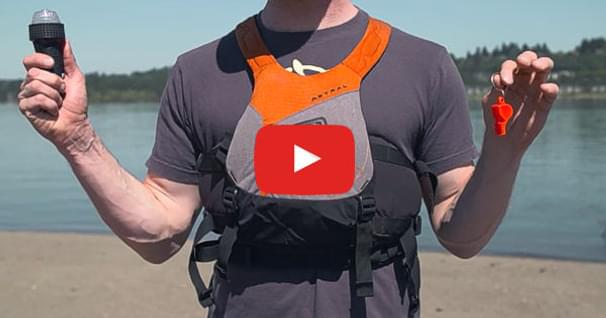
Essential Gear
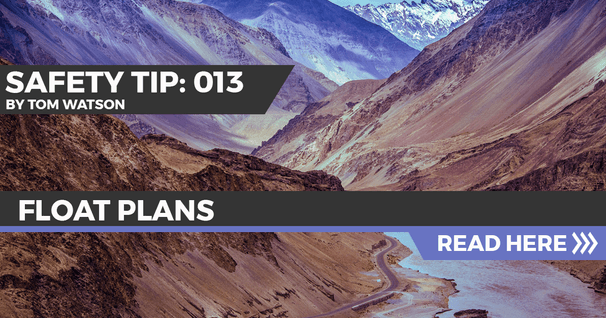
Float Plan Tips
What an itinerary is to a traveler, a “Float Plan” is to a paddler embarking on an extended kayak…
- About Us
- Advertising & Affiliates
- Legal Notices
- Printed Maps
- Books & Gear
- Trip Reports
- Recent Activity

- Use the link on Facebook, Twitter, other social media, emails, your blog, website, or any other place you can post a link
- DO NOT use any links with your affiliate ID in places that commercial posting is not allowed, such as certain forums and messageboards
- Remember to disclose that you are an affiliate of the company
- Be aware of the commercial posting policies of the places you are putting the link
- If you are looking for banner ads or other visual materials, check out the affiliate materials page
Hebridean Whale & Dolphin Trust - report any interesting sightings

April 2, 2024
Planning a kayaking trip this summer? You’re in the right place! This is the only kayaking packing list you’ll need!
Why this blog? Hi there! My name is Maddy and I’ve been working as a sea kayaking guide and writer since 2018! I am committed to providing you good and accurate information to help you plan a successful wilderness trip!
Note: this blog uses affiliate links. That means if you choose to make a purchase, I make a small kickback at no additional cost to you.

What to Pack for Kayaking Trips:
Here are the basics of what to pack for a sea kayaking trip, from day trips, to full blown overnight kayaking trips!
What to Pack for Kayaking: Casual Day Trip
Here is everything you will need for a casual kayaking day trip:
- A kayak ! If you’re looking to kayak on protected lakes and rivers for mostly day trips, but want the option to overnight, the best kayak for you is a Wilderness Systems Pungo
- A PFD (lifejacket). If you’re going kayaking, wearing a PFD is a must. I love my Astral PFD , but NRS makes a good budget option .
- A paddle ! For casual kayaking, the paddle you have with you is the best option. For the best kayak paddle for beginners, check out the Werner Skagit or Aquabound StingRay
- Quickdry clothing and sun protection: For a good budget option for kayaking clothes, check out the REI Trailmade collection.
- Map and compass to navigate
- Three ways to call for help in an emergency (a whistle, a signaling mirror, a device to communicate with no cell service)
- A kayaking Safety kit
- A wetsuit . Is the water and air temperature combined less than 120 degrees F? You absolutely need to wear a wetsuit or drysuit . Hypothermia can happen year round and is one of the primary killers of casual paddlers.
- A first aid kit (more notes on first aid kits below!)
Note!! Every now and then you’ll see someone on the internet suggesting that wearing a winter coat and boots kayaking is a good idea. It is not. They will fill with water, become cold, and make self rescue nearly impossible. For a guide to winter kayaking, click here.

What to pack for a sea kayaking day trip:
For a sea kayaking day trip, you’ll need everything listed above and a little bit more. You’ll definitely want a spare paddle, wetsuit, a sea kayak , a spray skirt, and a marine radio. For sea kayaking, you’re also much more likely to need that wetsuit or drysuit.
Kayaking VS. Sea Kayaking: What’s the difference?
Planning on sea kayaking instead of casual kayaking? Sea kayaking, or coastal kayaking, refers both to a type of vessel and a different sport than recreational kayaking (often referred to just as kayaking).
A sea kayak is a kayak greater than 15ft in length with sealed bulkheads, or pockets of air, on either end. In general, in a sea kayak a spray skirt is used to keep waves out of the cockpit. This way, the paddler can kayak in large waves without swamping the kayak. If the boat capsizes, it will not fill with water and sink, unlike a recreational kayak.
A sea kayak and sea kayaking skills and experience are recommended on all exposed coast kayaking trips, anywhere with tidal currents, or anywhere with open water in excess of a few miles. It’s important to remember that sea kayaking is a different sport than kayaking, despite similar roots. Having kayaking experience does not mean you are ready to tackle a sea kayaking route.
Personally, I like to explain it as kayaking is to sea kayaking is what day hiking is to mountaineering— this sounds like an exaggeration, but it’s really not. Sea kayaking (especially on exposed coasts!) requires knowledge of complex weather patterns and tides, deep water rescues in big waves, navigating between islands and complex coast, gathering weather and sea state information and making informed choices about risk, tidal rapids, long term planning, and more.

What to Pack for an Overnight Kayaking Trip:
Wondering what to pack for an overnight sea kayaking trip? This is everything you need to pack for your overnight kayaking trip. You’ll need your camping gear + all the day trip kayaking gear listed above!
Sleep System for Sea Kayaking Trips:
Keep in mind that the key to a happy sea kayak camping trip is gear that will dry quickly. Despite your best efforts, things will be wet. This means choose synthetic over down!
- Nemo Temp Synthetic Sleeping Bag (budget friendly) OR Nemo Forte Endless Promise (higher end)
- Nemo Tensor Sleeping Pad (changed over from Big Agnes bc this one is equally comfortable comparably priced and packs down much smaller
- Waterproof Sea to Summit Compression sack for Sleeping Bag
- A freestanding lightweight tent. Read about the best tent options here!

Where can I get accurate weather for Sea Kayaking?
When sea kayaking, having accurate weather is extremely important. I recommend using at the barest minimum a VHF marine radio to get the Marine Zone forecast every morning before paddling. In addition, a Garmin InReach can also provide you with up to date weather.
When paddling, it’s really important to note that local weather patterns have far more influence on what you will experience on the water than the generalized forecast. Most especially in remote regions, the generalized forecast will not account for these local weather patterns. This is one of the reasons that hiring a local guide with extensive sea kayaking experience is a good idea, especially if you’re dealing with water temperatures below 70 degrees F.
In general, you can find a good weather forecast for your region at weather.gov in the US.
For example, if you’re paddling in a region with fjords you may be subject to katabatibc winds in excess of 45 knots— extremely dangerous to paddle in. Katabatibc winds are not likely to appear in a marine zone forecast, but a paddler with experience will know what conditions lead to these winds, and where they are likely to crop up.

Kitchen Gear 1-2 People, Sea Kayaking Trip:
- MSR camp stove
- Sea to Summit Collapsable Dish-wear
- 1-2 water bottles, Nalgene recommended. Metal water bottles will sink if dropped, even if you leave a pocket of air
- Sawyer Squeeze water filter (alt: iodine tablets)
- Spork (long enough to reach bottom of dehydrated meals while keeping your hand clean ideally)
- Tin mug if coffee drinker
- If with a group and making meals from scratch, Nalgene bowl to eat from. If not, straight from the bag
- Urssack for critter proofing. At the Havasupai campground I did hear reports of folks getting food stolen by raccoons in the night.
- Depending on where you’re paddling (freshwater or not) a water dromedary . If it’s hot out, I budget 5L per person, per day. Usually this is more than plenty.
What if I have a bigger group?
Going with a guided tour for your sea kayak camping trip? Odds are, unless otherwise stated, that your guide will be doing the cooking and kitchen tasks! (Camp cooking is one of my favorite parts of working as a kayak guide!)
If you are planning on doing all the cooking for your group, look into a weatherproof stove like the MSR whisperlite, industry standard for a lot of expedition style trips. You’ll also want to adjust your pot size to a larger pot, and depending on group size and meal needs, perhaps bring more than one pot or stove. I’ll assume that if you’re cooking for a large group, you already have experience meal planning and camp cooking for a group.
If not, I recommend starting with a guided tour, or having your party be responsible for their own meals in groups of 1-2. In my experience, otherwise things get messy when it comes to portion size, timing of meals, and camp tasks. Unless you have guide experience or sea kayak experience specifically with meal planning for groups, put the onus of meal planning on individual members of your part to plan for themselves.
(And like, not to be that person but review each others meal plans!! If the 20 year old who is an awesome paddler but doesn’t have expedition experience plans on bringing just ramen and m&ms for five days, make him repack and replan!!)

Packing Food for Overnight Sea Kayaking Trips:
Getting enough food as you’re paddling is really important. DO NOT just pack ramen and oatmeal to eat for days straight. You will be uncomfortable, and it can even be dangerous.
In general, budget one breakfast, one lunch, one snack, one dinner, and one dessert for a day. Personally, depending on the trip, I will either purchase pe-packed meals in advance, or dehydrate my own meals in advance.
If you will be kayaking longer than a few days or long distances (greater than 15 miles a day), I recommend coming up with a nutrition plan. I am not a nutritionist, but here are a few resources that are a good place to start:
- Ultralight Backpacking Meal Plan
- Backpacker’s Nutrition Guide
The excellent thing about kayaking is that you can fit more food than backpacking, and you can store food at the waterline of your kayak to “refrigerate” it while paddling. On shorter trips, I’ll eat better paddling than I do at home!
Pack more food than you think, and pick meals you know you will like . Those dehydrated meals at REI are not a fun thing to mess around with on a wilderness trip. Anything you don’t like and can’t finish you’ll have to pack out, and it will be much heavier now that it’s rehydrated. If you like pasta, just get pasta.

Electronics to pack for an overnight Sea Kayaking Trip :
- One external battery pack for phone (I usually bring a pretty beefy battery like this one!)
- Garmin InReach
- Canon Rebel SL3 (the most accident-proof budget-friendly camera out there; I have licensed photos to big magazines and tourism boards from this camera) + SD card + spare battery
- A good dry bag (see below!!)
What dry bags are the best for kayaking trips?
The best dry bags for kayaking are small, 10-20L thick and tough dry bags. You want a smaller bag to make packing your boat easier, and you want a tougher dry bag to prevent it from tearing.
After six years working as a sea kayak guide and expedition paddlers I have a lot of advice on what dry bags work for kayaking, and which do not. STAY FAR AWAY FROM LIGHTWEIGHT DRYBAGS. They will rip. You’re going to be jamming them into kayak hatches, and they will rip, they just will.
In addition, stay away from dry bags larger than 20L. While those bags are super great for canoeing or rafting, packing a sea kayak requires all your gear fit inside hatches; a large dry bag will make your life much more difficult and may even be impossible to pack.
For packing your clothes and sleeping bag for kayak camping, Sea to Summits dry bag compression sacks are the best you can invest in. These have lasted me almost four years now, and will keep your stuff both dry and compact. I wouldn’t submerge them, per se, but they are perfectly fine to keep water out for kayaking purposes.
Check out the tough Sea to Summit Big River dry bag in 13L , or the Sealine discover dry bags .
Looking for more on sea kayaking and overnight paddling? Check out this detailed guide to kayak camping for beginners !

Clothes to pack for a kayaking trip:
- Synthetic Puffy Jacket : highly packable, you want something that will pack down to nothing but add a lot of warmth at night.
- 3 pairs of Darn Tough Socks (1 pair worn, one for sleeping, one spare.)
- 4 pairs of underwear
- 1 pair of quick dry shorts
- One pair of long underwear (or just leggings that already have holes in them)
- Hiking pants Good for sun protection and keeping legs safe from rocks while hiking or paddling.
- 1 long sleeve wool baselayers top to wear, one to pack. I like Smartwool , it’s consistently had the most longevity of any baselayer I own. I recommend one baselayer to paddle in and one to sleep in minimum.
- One fleece pullover, thin weight
- Camp Sandals for camp (alt: crocs). I recommend a good pair of hiking sandals; if you get blisters on the way in you can hike in these instead to give your feet a break.
- Paddling Shoes: Neoprene booties OR an old pair of trail runners. In most seasons, I’m team trail runner in the water. This protects your feet from rocks and is WAY more comfortable to paddle in than sandals, which are likely to fill with rocks when you’re walking in water or on beaches.
- Thin wool gloves . Almost never regret packing these! We hiked in late March and it snowed on the way out.
- Raincoat & Rain pants )
- Compression Sack / Drybag for clothes
MISC things to pack for overnight kayaking:
- First Aid Kit
- Emergency Bivvy (Keep in a pocket accessible without removing your backpack. If you fall and break something and cannot easily move, this will make it easier to last a night. I have only ever used my emergency bivvys when helping strangers, but it has never not been worth bringing on the off chance I can help someone in trouble.
- Maps / Charts
- Signalling Mirror
- UL repair kit (tent split covered in duct tape and noso patch or two)
- Pillow (meh, often I do not bring)
- Hand sani, toothbrush, sunglasses
- Binoculars ( So much fun if on the ocean!)
- Bug shirt (if it’s buggy enough for the spray, it is for the shirt too)

First Aid Kit Notes:
You can purchase a first aid kit from REI prepackaged, but I like to build out my own for my own specific backpacking needs. I blister easily, and for me preventative blister care is super important.
This looks like cutting my toenails before trips, duct taping or KT taping over the parts of my feet that blister before I start hiking, and the second I start to feel a hotspot, I take off my hiking boot and use Glacial Gel patches and KT Tape to cover the spot before it becomes a blister.
It is far better to stop hiking and tend to your blisters early than to try and patch up an open wound. For me, I know that on long downhill sections I blister on my pinky toe and the outer edge of my foot, so I slap some duct tape on the usual spots before hiking so it doesn’t rub. On uphills, I blister at my heels, so I do the same.
The most common backpacking injuries tend to be blisters, dehydration, and burns from camp stoves. I come prepared for this by having a burn kit, rehydration packs, and practicing preventative First Aid by staying hydrated, preventing blisters, and being conscious of boiling water and camp stoves (ie, don’t let someone pour freshly boiled water into your coffee cup while you’re holding it!!)

Check out the ultimate guide to buying your first kayak as a beginner!
How to pack a kayak for overnight paddling trips:.
Wondering how to pack your sea kayak for an overnight paddling trip? Here are some quick tips:
- keep everything you’re going to need during the day accessible either on your deck, in your cockpit, or in your day hatch (the small hatch behind the cockpit in a solo boat.
- pack smaller drybags rather than larger for easier packing
- do your best to keep the weight on the kayak centered; this matters a lot more in solo boats than tandems.
- if you’re paddling into a headwind, load your boat bow heavy. In a tailwind, load your boat stern heavy. This often doesn’t make a huge difference but may be helpful for paddlers in solo boats on longer trips. Tandem boats have so much buoyancy that how you pack them weight wise doesn’t make much of a difference.
- bring some mesh bags or IKEA bags to help carry gear from your kayaks to camp
- ALWAYS ALWAYS ALWAYS carry your kayaks above the high water line and tie them off. Every kayaker will be burned at one point. Learn from my mistakes.
looking to dive into the outdoors this summer? Here’s where to start:
- check out the ultimate guide to planning a solo female road trip!
- learn about backpacking and packing for beginners!
- read about the best kayaking destinations near Seattle!
free resources like this one are made possible by paying subscribers of the Hello Stranger Newsletter . Join the newsletter today to connect with thousands of like-minded adventurers and get gritty and honest adventure stories delivered right to your inbox (aka read my diary).
Love reading about what to pack for a kayak trip share this article on social media:.


Ultimate Guide To Planning A Father And Son Trip To The Florida Keys
T hinking of planning an unforgettable vacation with your son? The Florida Keys could be your dream destination. This ultimate guide will lead you through everything from selecting the right Keys to visit, to finding kid-friendly attractions and eateries.
Best Family-Friendly Keys to Visit
Key Largo offers stunning scenery and a variety of family-friendly activities, making it an ideal destination for a father and son trip to the Florida Keys .
Key Largo is a top spot for family trips and it stands out in the Florida Keys chain for both it's size and the fact that it is the first island that you come to once you depart the South Florida mainland. Key Largo has tons fun things to do for men of all ages and it makes a great destination if you are visiting Florida for a cruise out of Miami and just want to get a quick taste of the Keys without committing to a full road trip to Key West . You can find many beaches here that are perfect for families.
In large part because of the size of the island, Key Largo has lots of natural land for things like Kayak Tours through mangrove swamps, birding tours, beaches, and of course diving off the coast to explore the coral reef.
Another fun thing to do here is taking a Steamboat tour on the African Queen . This famous boat was featured in the 1951 classic movie and is one of the major inspirations for the concept behind Disney's Jungle Cruise.
Islamorada sticks out as a great family vacation spot. Kids can enjoy fun activities like boat rides, beach games and wildlife shows at the Theater of The Sea where dolphins, sea lions, and parrots put on entertaining shows that men and boys of all ages will enjoy.
Or for those aspiring divers, Islamorada hosts the History of Diving Museum where you can learn about deep sea diving, submarines, and more. Of course, if you want to actually go diving, there are plenty of snorkeling and scuba tours that depart from this area too.
The views in Islamorada are very pretty. Palm trees line the shores and the water is blue and clear. Beach shops sell cool items that kids will love. Parents will enjoy trying the local cuisine at tasty restaurants nearby.
Marathon is great for a family trip. This place sits in Florida and includes other small keys too. Here, your family can enjoy many things to do. You could pay a visit to the Seven Mile Bridge or Sombrero Beach.
Another fun spot here in Marathon is the Florida Keys Aquarium Encounters where they offer a variety of aquatic experiences including the "Big Shark Bay Encounter" where you and your son can feed an adult Nurse Shark, or visit the "Stingray Cove Encounter" and feed a stingray instead. Going fishing, boating, snorkeling, or scuba diving are some other actions you can try here with your son and family members.
Don't miss seeing The Turtle Hospital too! Though Key West might suit grown-ups more than kids, it's still near Marathon and worth checking out on your trip.
Key West is one of the best family-friendly keys to visit in the Florida Keys. It has beautiful beaches with palm trees and crystal blue water, perfect for relaxing or playing in the sand.
Families can enjoy outdoor adventures like snorkeling, kayaking, and paddleboarding. Key West also offers exciting water sports activities for kids such as jet skiing and parasailing.
There are plenty of family-friendly resorts in Key West that provide a comfortable stay and amenities for children. Families can explore historical landmarks like the Key West Shipwreck Treasure Museum or visit the Key West Aquarium to see various marine life up close.
Family-Friendly Florida Keys Things To Do
Experience the thrill of swimming with dolphins at Theater of the Sea, go on a fishing adventure with a charter in Marathon, and discover the fascinating world underwater at Key West Aquarium.
This is just the beginning of an unforgettable trip!
Enjoy A Splashtastic Performance at Theater of the Sea
The Theater of the Sea is a fun and educational marine park located in Islamorada, Florida Keys. It offers a variety of shows with dolphins, sea lions, and parrots that both entertain and teach visitors about fish, turtles, and reptiles.
You can even participate in activities like "Shallow Water Swim with Dolphins" where you get to interact closely with these amazing creatures while avoiding deeper water. This family-friendly attraction is suitable for kids of all ages and promotes nature conservation through its exhibits and interactive experiences.
Take A Fishing Charter
Looking for a fun and exciting activity to do with your family in the Florida Keys? Look no further than booking a fishing charter! Florida Keys Fun Fishing is an Islamorada fishing charter service that offers a variety of fishing experiences.
Depending on your son's age and interests you can find inshore fishing, fly fishing, or even shark fishing charters here. While there are boat captains operating from most of the different keys, the middle Keys areas of Marathon and Islamorada tend to be the most popular, these charters are typically full or half day, though there may be some shorter options offered too.
If fishing isn't your thing, there are also plenty of scenic charters offered here as well where you can learn more about the ecology of the Florida Keys.
Feed The Tarpon and More At Robbie's
Robbie's in Islamorada is a popular destination for family-friendly activities and attractions in the Florida Keys. This unique spot offers a variety of fun-filled experiences for both kids and adults.
At Robbie's Marina , you can enjoy exciting watersports like kayaking, paddleboarding, and jet skiing. There are also opportunities for fishing charters where you can try your hand at catching some delicious seafood.
After all the adventure, grab a bite to eat at one of the delicious dining options available at Robbie's. With its wide range of activities and attractions, Robbie's is the perfect place to create lasting memories with your family during your trip to the Florida Keys.
Key West Shipwreck Treasure Museum
The Key West Shipwreck Treasure Museum is a fascinating attraction located at 1 Whitehead Street in Key West, Florida. This museum showcases the remnants of Spanish galleons and shipwrecks, giving visitors a chance to discover an important part of Florida's maritime history.
Inside, you'll find numerous artifacts on display that provide a glimpse into Key West's past and the salvaging of these shipwrecks. One highlight is a large silver bar recovered from one of the wrecks.
Families visiting Key West should definitely make time to explore this museum as it offers an educational and entertaining experience for all ages.
Key West Aquarium
The Key West Aquarium is a fun and educational place for families to visit in Key West, Florida. You can see all kinds of marine animals and underwater creatures there. They have a big coral reef tank where you can see colorful fish species swimming around.
If you're brave enough, you can even touch some of the sea cucumbers and stingrays in the touch tank. One of the most exciting things at the aquarium is watching the shark feeding! It's really cool to see these powerful creatures up close.
Plus, they also offer dolphin encounters where you can get closer to these amazing mammals. So if you're interested in ocean life and want to learn more about marine animals, make sure you check out the Key West Aquarium during your trip to Florida Keys.
Marathon Turtle Hospital
Located in Marathon, Florida, the Marathon Turtle Hospital is a special place that rescues and rehabilitates injured sea turtles. Established in 1986, their primary goal is to help these amazing creatures get back on their feet and return them to their natural habitat.
When you visit the hospital, you can take guided tours where you'll get an up-close look at the rehabilitation process. You might even have the chance to interact with artifacts like the carapaces of these incredible turtles.
It's truly a family-friendly experience that offers a unique opportunity to learn about marine life conservation and endangered species. So if you're planning a father and son trip to the Florida Keys, don't miss out on visiting the Marathon Turtle Hospital – it's an unforgettable experience!
Dry Tortugas National Park
Dry Tortugas National Park is a beautiful and remote national park located 70 miles west of Key West in the Gulf of Mexico. This stunning park is known for its natural beauty, including pristine beaches and vibrant coral reefs that are perfect for exploring underwater.
With only 1% of the 100-square mile park on dry land, it's truly an underwater dreamland for snorkelers and divers. The park was discovered by Ponce De Leon and named "The Islands of Turtles" because of the abundance of sea turtles found there.
If you're looking for an unforgettable adventure with your son sharing stories of military battles and pioneering engineers surrounded by beautiful nature and abundant wildlife, Dry Tortugas National Park should definitely be on your list!
Mallory Square Sunset Celebration
The Mallory Square Sunset Celebration is a fun and lively event that takes place every evening in Key West, Florida. It's a great activity for families to enjoy together. At the celebration, you can watch the beautiful sunset while being entertained by street performers and local artists.
There are also food vendors where you can grab some tasty treats. The event has been going on since the late 1960s and has become a popular tourist attraction. It takes place at Mallory Pier, which offers an amazing view of the sunset over the water.
So if you're looking for some family-friendly activities in Key West, be sure to check out the Mallory Square Sunset Celebration!


IMAGES
VIDEO
COMMENTS
What is Mapometer.com? Mapometer.com is an online map-basedroute planner for sports people. It enables you to map your Canoeing and calculate the distances and elevation profiles of your routes. It also provides training logs so you can track your progress and monitor the calories you burn.
The Trip Planner has two main sections: the Map and the Info Panel. In a desktop or tablet browser, the Map is on the left and the Info Panel is on the right. ... This is a Google map, with pushpin icons at kayak put-ins, tide stations, and other points of interest. ... El Niño, seismic events, subsidence, uplift, or changes in global sea ...
That's 3 miles per hour on average, plus a 15-minute window. 1 hour and 15 minutes of total float time for a 3-mile trip. Here is a helpful chart to help you determine how long a float will take you. Remember that longer floats will need more leeway time to allow for more stops or slowdowns. If you plan on making any stops along the way ...
The 5 Ps of sea kayaking. #1 Plan (And Then Plan Some More) First of all when planning a kayak trip, get familiar with the area you'll be paddling in - and pick your route, including entry and exit spots and a plan B route, accordingly. Proper planning is half the battle in ocean kayaking, if you ask me. And by "proper planning," I mean:
Safety First: Preparing For Emergencies On A Sea Kayaking Trip. No matter what type of kayaking or other water sports you plan to do, you should always be prepared for an emergency. For starters, life jackets should always be worn. In an emergency, you may not have time to put it on before you need it, as a capsize can happen in a split second. ...
Trip Planning: Gear Checklist Sea Kayaking Gear. Download and customize this checklist of sea kayaking and kayak touring gear to make sure you get to the put-in with all the kit you need. Trip Planning: Gear Checklists. A collection of downloadable checklists for camping, rafting, kayaking, and more to help you organize your trip. ...
But don't trade in your sea kayak for a sit-on-top fishing sled just yet. Learn from the experts to snag supper without sacrificing touring efficiency. The Plan: The handline is a compact, effective tool for trolling and jigging. Inuit and Aleut hunters pioneered kayak fishing centuries ago using this simple combination of spool and line.
Depending on where you're at and the weather conditions, your emergency kit should include things like a fleece jacket and pants, rain gear, heavy wool socks, a warm hat, a headlamp, energy bars, water matches and a lighter with some fire starter, and even a small tarp and some rope. Of course it's not going to make for the most enjoyable camp ...
Kayaking Trips - Find & Plan. Browse all kayaking trips here, there's a trip for every level of kayaker. Whether you're looking for a guided trip, kayak rentals, self-guided, day trip, multi-day trip, or anything in between, there's a kayaking trip for you. Add Your Own Trip.
Plan your trip with enough time before dusk or sunrise and identify safe landing points in case of unexpected winds. Respect marine wildlife like dolphins and whales. Exploring rocky coastlines during sea kayaking unveils unique habitats. Wear protective gear and choose your routes carefully to avoid slipping on sharp surfaces.
If you're paddling a sit-on-top kayak or a canoe, you will most likely use a barrel or a large dry bag for the trip, and you can do this at home. However, we recommend packing sit-in kayaks - especially touring kayaks - at the water. Your gear can easily add 25 lbs. of weight to your kayak.
Approach your first sea kayaking trip with a growth mindset—a willingness to embrace challenges, learn from experiences, and celebrate the process of improvement. ... Start Planning Your First Kayaking Trip in Coastal Waters. Unleash the paddler in you, explore the beauty of coastal waters across the world, and discover the incredible ...
This is another free app that offers information on over 25,000 paddling routes to plan your next kayak trip. The Go Paddling app offers detailed information on existing routes, and it can also help you locate a good launch point for different routes. Users can also add their data and information that others can make use of.
Eklund, 26, says her trip was equally inspired by Natalie Warren and Ann Raiho's 2011 Hudson Bay Bound canoe expedition. Unlike her predecessors, Eklund made the trip in a sea kayak, which made navigating the Hayes River's 45 rapids more challenging. She didn't hesitate to make the 4.5-month expedition solo—the first to do so—though ...
Explore the free nautical chart of OpenSeaMap, with weather, sea marks, harbours, sport and more features. Download for offline use.
Step 2: Plan Your Route. Decide where you want to paddle during your trip. Look at maps or ask for guidance to choose a route that suits your preferences. Consider how long you want to be on the water and any interesting places you'd like to explore along the way.
Pencil is better than pen as even the most experienced tidal planner gets wrong now and again! The times of high and low water do not equal to tidal streams directly. 1. Work out the tides for the 'standard' port. Well a standard port is a 'big' port historically which the tide times and heights have been worked out for.
Make sure that your information is all updated before you head out with your signaling units. That equipment should be recorded in your Float Plan as well. Your trip itinerary is a key element in the plan. Where you departed from may be quite obvious, but include it anyway. Also record the anticipated time you will be in route, where you plan ...
Outside your window, the snow is flying, the wind is blowing, the temperature is thirty below, and the ice is so thick your auger never hits water. No matter - kick up your feet and let your dreams take hold. Explore campsites, waterfalls, portages, and lakes from the warmth of your home. Let Paddle Planner help you discover the wilderness when ...
See the sights safely on your kayak trip. Kayak tripping is a great way to see the sights and stay active, but kayaking also has an inordinately high rate of accidents and deaths compared to other activities like power boating. Our goal in explaining how to plan a kayak trip is to raise your awareness of safer paddling practices.
Imray Tidal Planner phone app (£2.99 for 1 year's tides inc. secondary ports) Wind speeds reference chart (see below) Method For Approximately Grading the Sea - MAGS (Gordon Brown) Scottish water levels. UK sea kayak guidebook - trip reports, tons of info. MDCC Trip Organiser Planning sheet and Safety Equipment table.
What to pack for a sea kayaking day trip: For a sea kayaking day trip, you'll need everything listed above and a little bit more. You'll definitely want a spare paddle, wetsuit, a sea kayak, a spray skirt, and a marine radio. For sea kayaking, you're also much more likely to need that wetsuit or drysuit. Kayaking VS.
Animas River in Durango, Colorado is a Top Kayaking Trip in the US for Families. Located in the heart of Colorado, the Animas River is renowned for its scenic beauty. This 126 mile gem originates high in the San Juan Mountains, northeast of Silverton, and joins the San Juan River at the New Mexico border.
In large part because of the size of the island, Key Largo has lots of natural land for things like Kayak Tours through mangrove swamps, birding tours, beaches, and of course diving off the coast ...